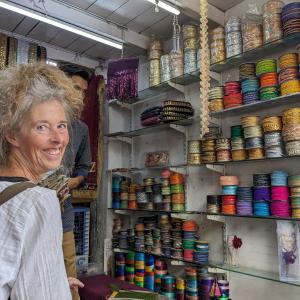Travels through Gujarat
Our loyal traveller Anna prefers to write a poem in place of feedback, and we couldn't love it more. Check out her poetic account of our Gujarat and Rann of Kutch tour here…
For Nitin
We gather first at Ahmedabad,
we travellers as yet unmet,
meet now at the Lemon Tree
for the trip we won’t forget.

On the hurly-burly street we wait to cross,
Nitin parts the tide of tuk-tuks with his hand,
leads us to the far shore of the Siddi Sayed Mosque,
where ragged men are sleeping, and we stand,
Light filtering through the fretwork of the sandstone Jali screen,
decorated with the tree of life, and chiselled palm frond in between.

At Huthseeing,
temple of the Jain we stand beneath the patterned roof in awe,
marvel at the “intricated” toran,
tread the marble patterned floor.
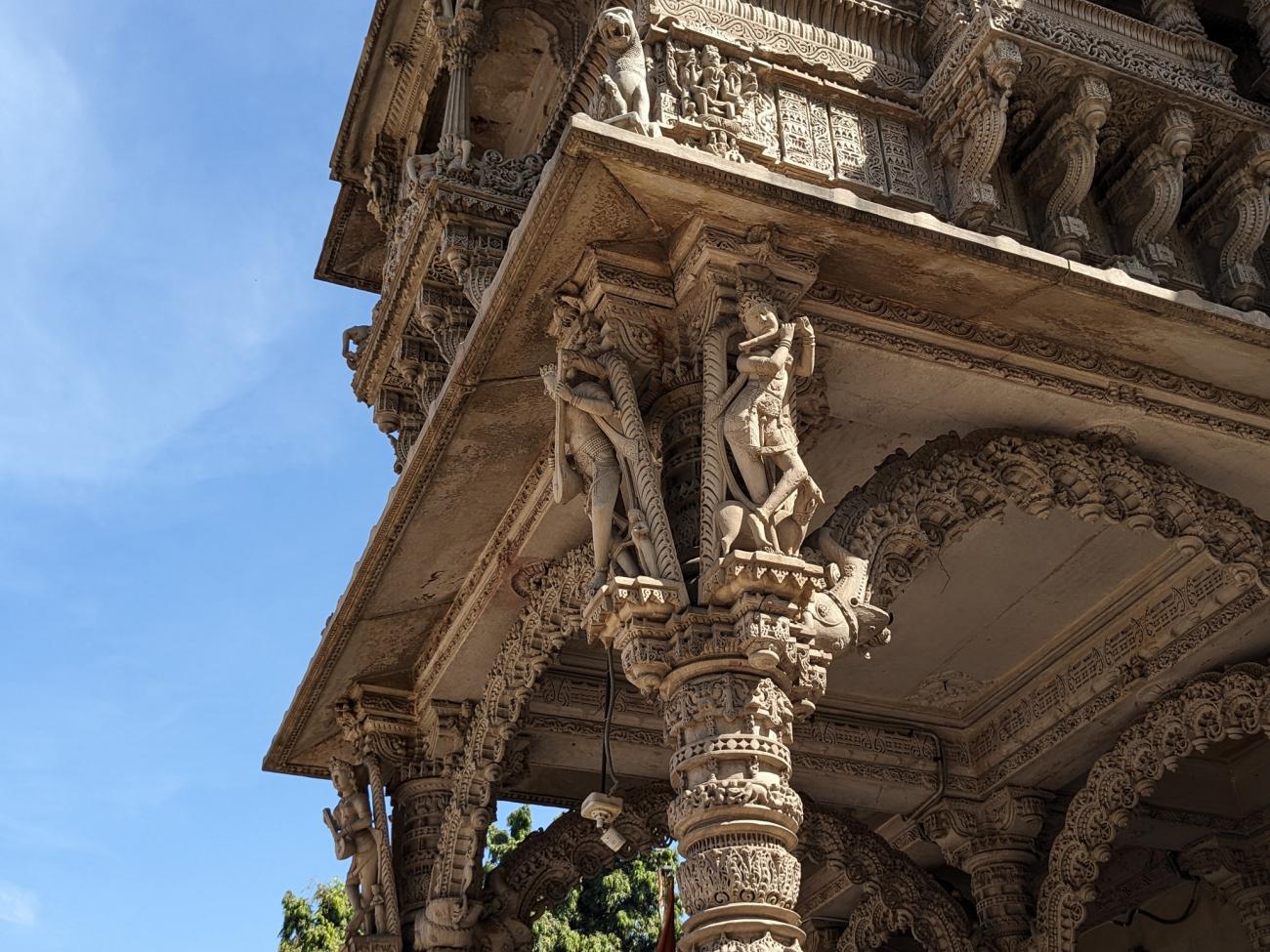
At Gandhi’s ashram on the riverbank
we read the story of his life,
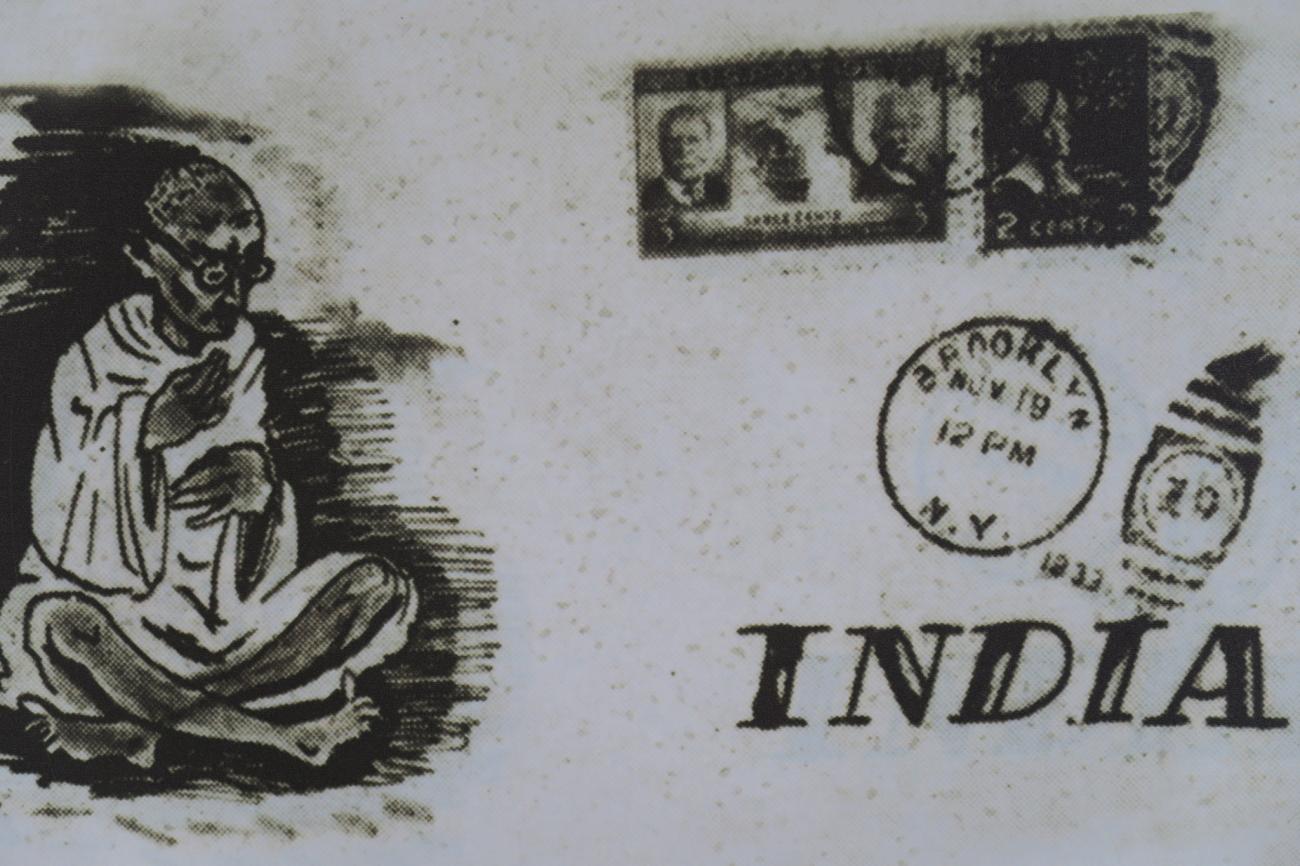
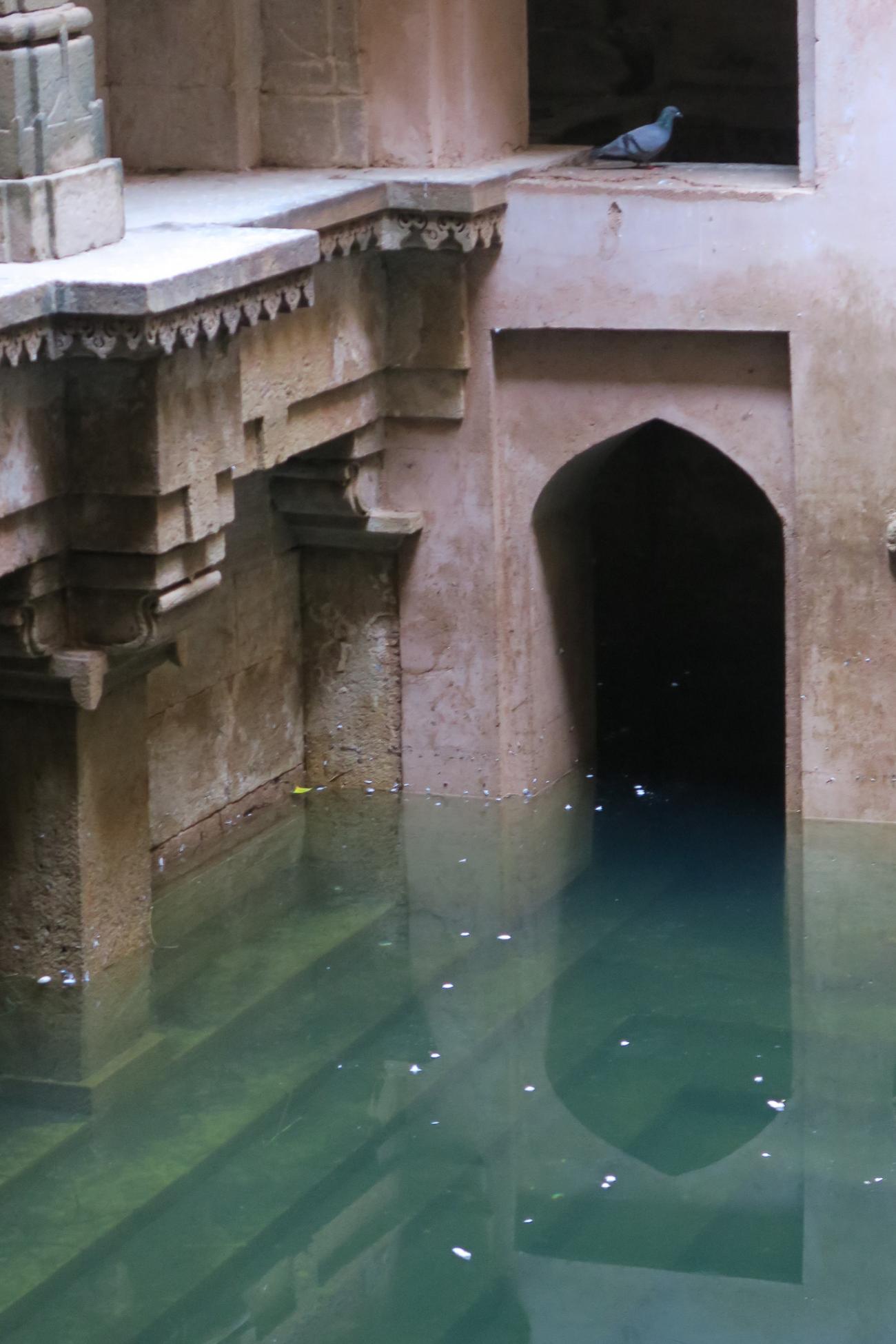
the Stepwell named for Ruda Bai
who flung herself five storeys down
in order not to be the victors’ wife.
A night walk takes us thro the old town streets,
where friendly locals stop to offer sweets.
Soft rounds like palest apricots and silvered diamonds offered in a box,
by people paying homage to their balance books.
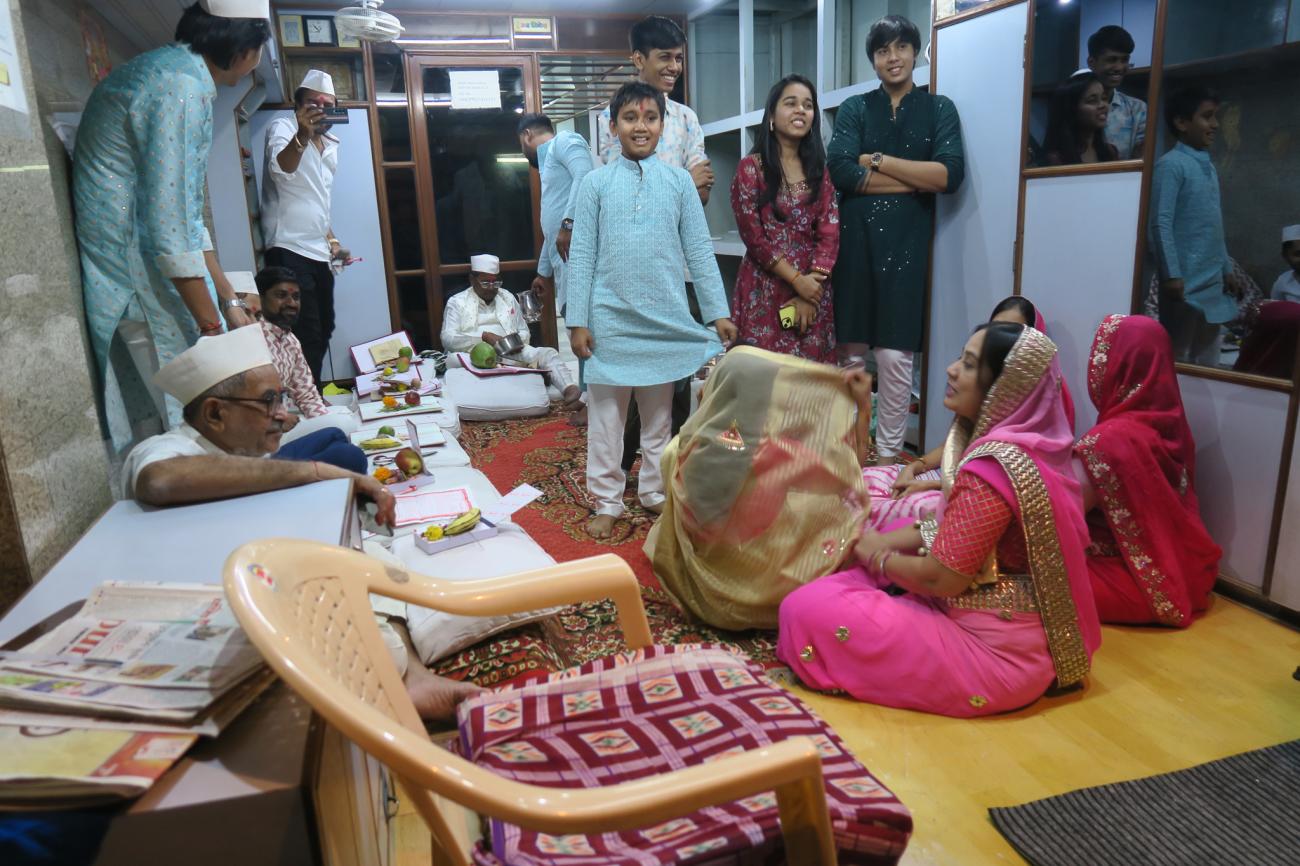
Next day we drive from town
as gipsy children lift their hands for food,
and tribal murals, ochre, blue and brown
give way to star-shaped leaf of castor oil,
where cotton plant and marigold
flourish in the sun-dried soil.
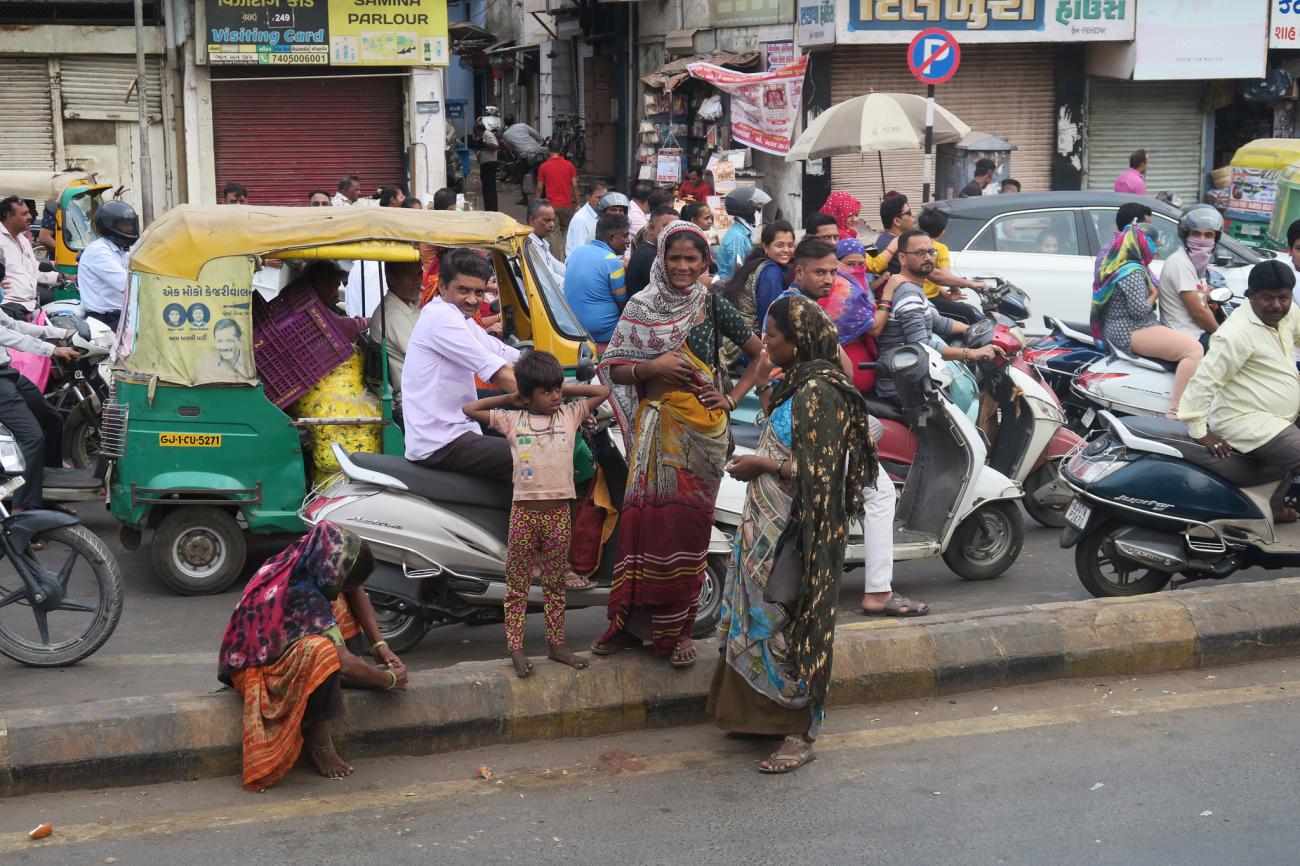
We leave behind the fretted sandstone
and the weathered dome
and make our way to Dargarbarg,
once royal palace and our two-day home.
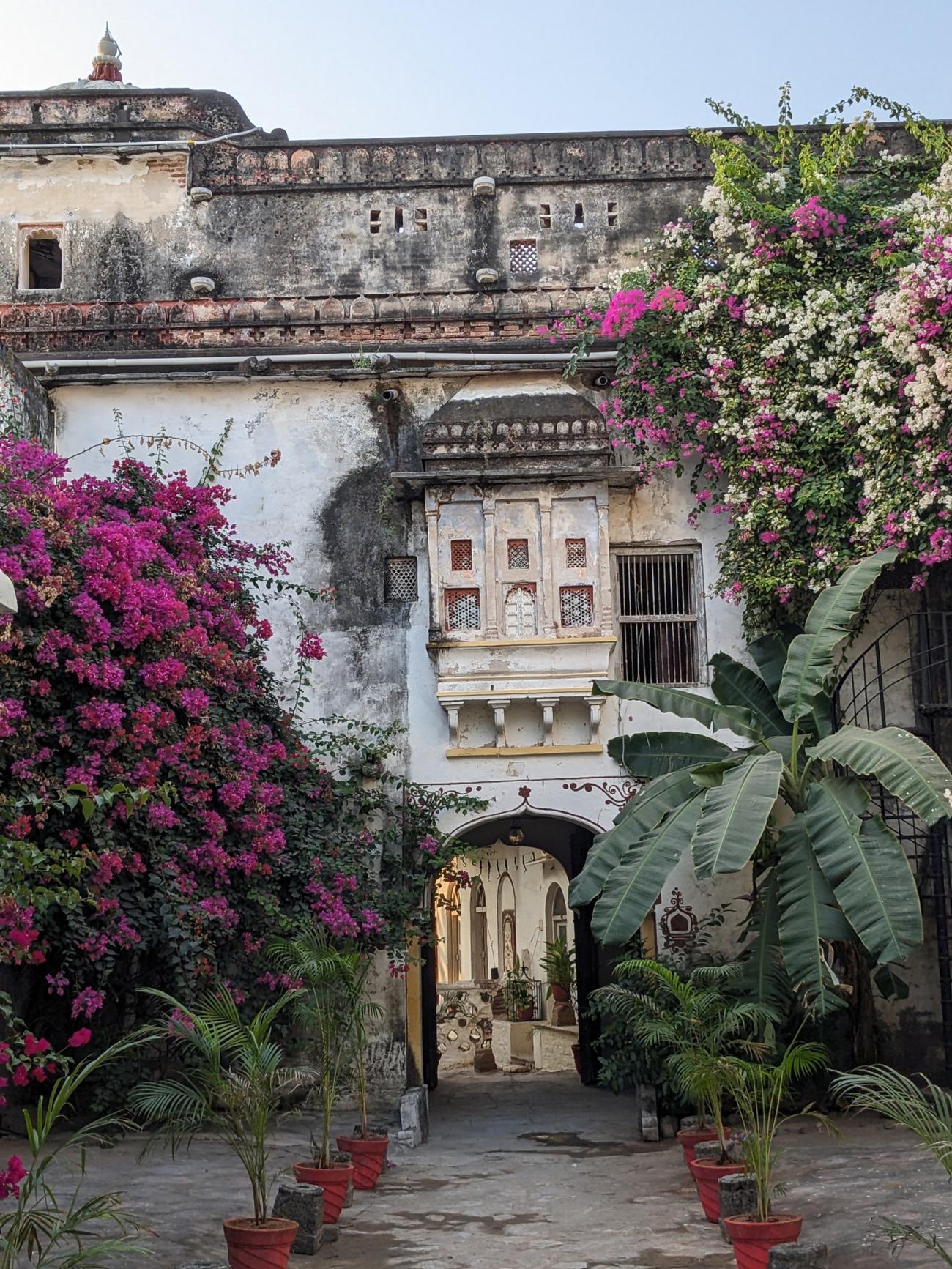
Fire crack and fruit bat punctuate our sleep,
our wake-up call for trip by jeep
to village homestead.
Patterned cow with decorated horn
and Green-veiled mother kneading dough
for bread she makes from corn.
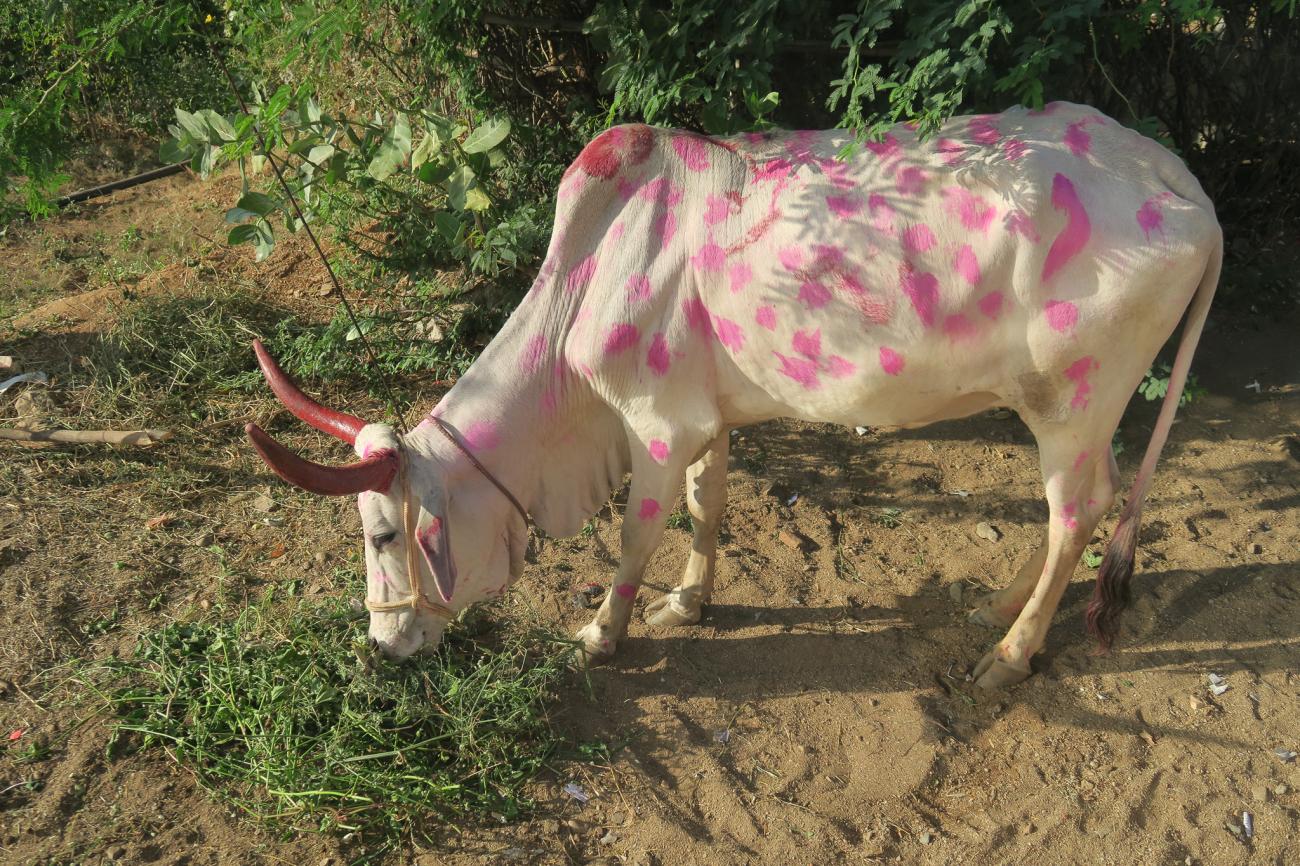
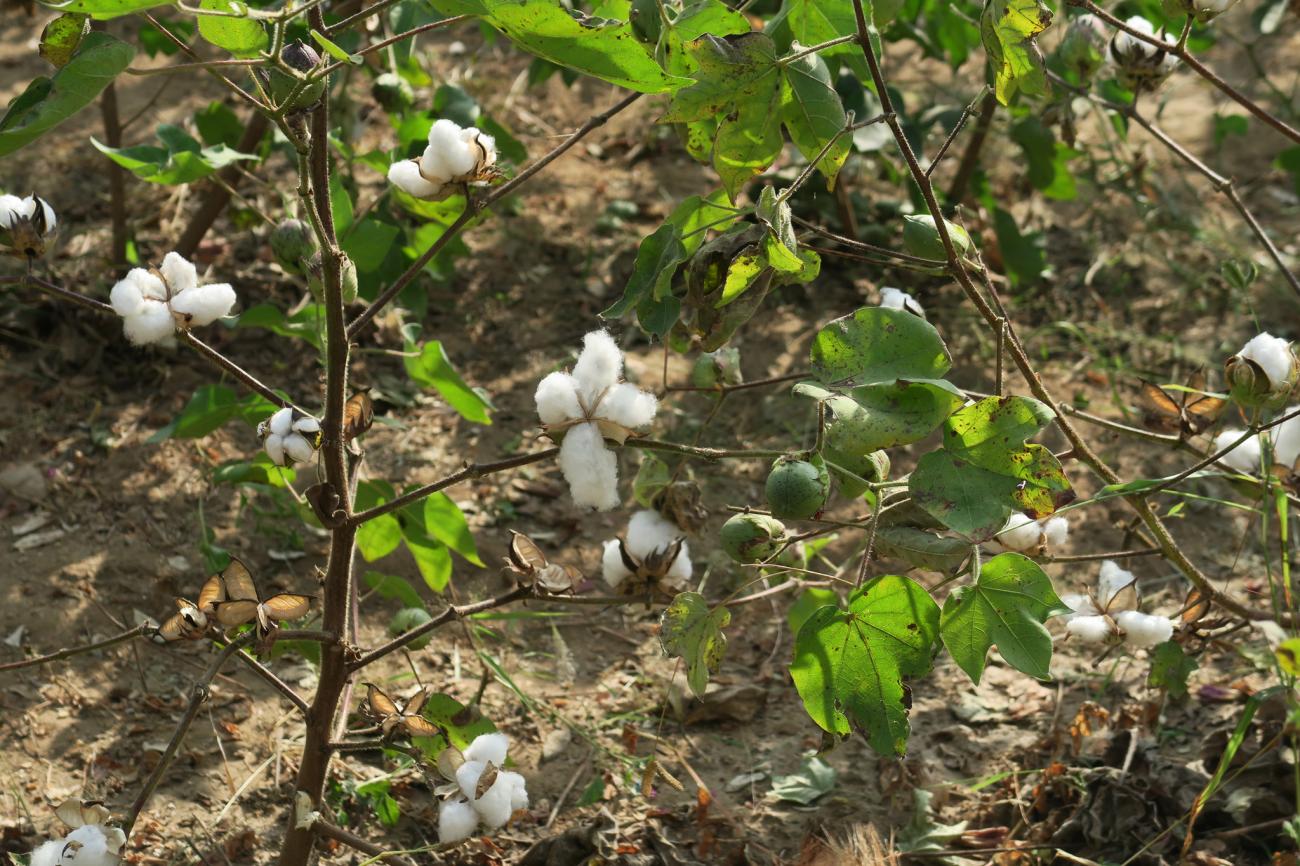
Bolls of cotton growing fat upon the bush,
a shrine beneath a tree, where people come to make a wish
and terracotta horses closely ranked
are offered up with coconut in thanks.
Custard apple piled with vegetables at Ambaji
where Garacia women sell their wares
and local people stop to ask for selfies
and to follow us with smiles and friendly stares.
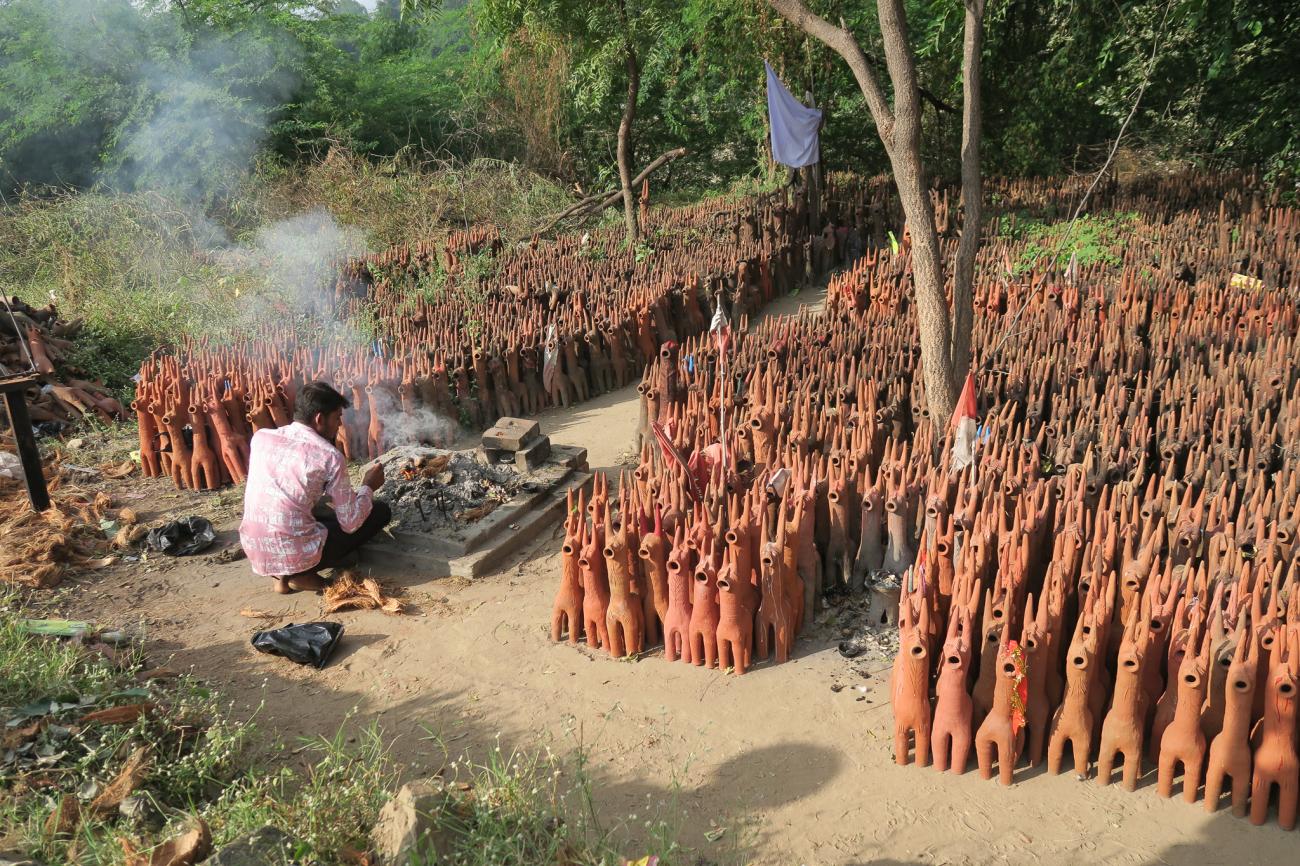
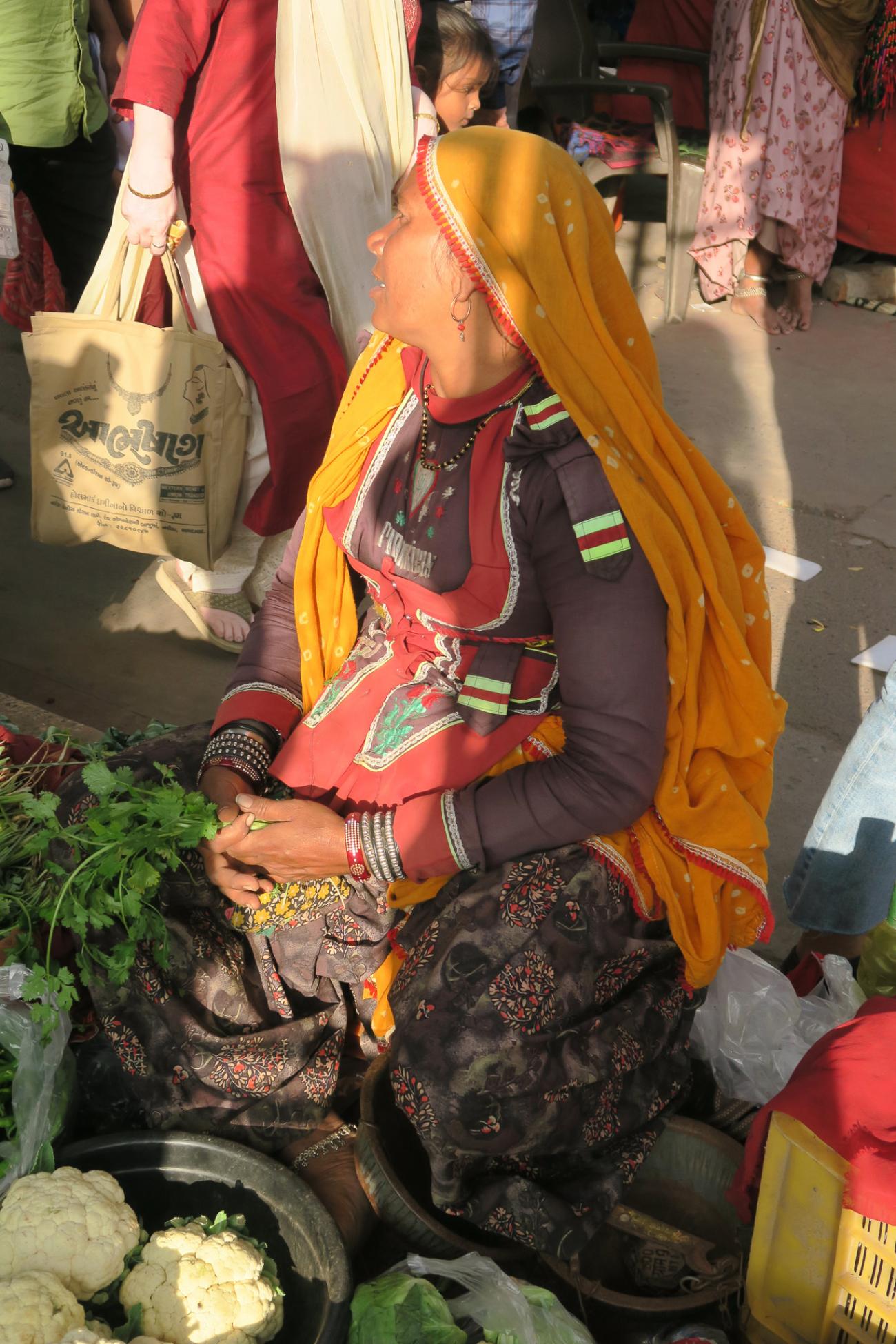
And from the mayhem of the market,
plastic monkey, padlock, pot and pan,
we take a tuk-tuk to the complex of the Jain,
marvel once again and head past lentil field for home.
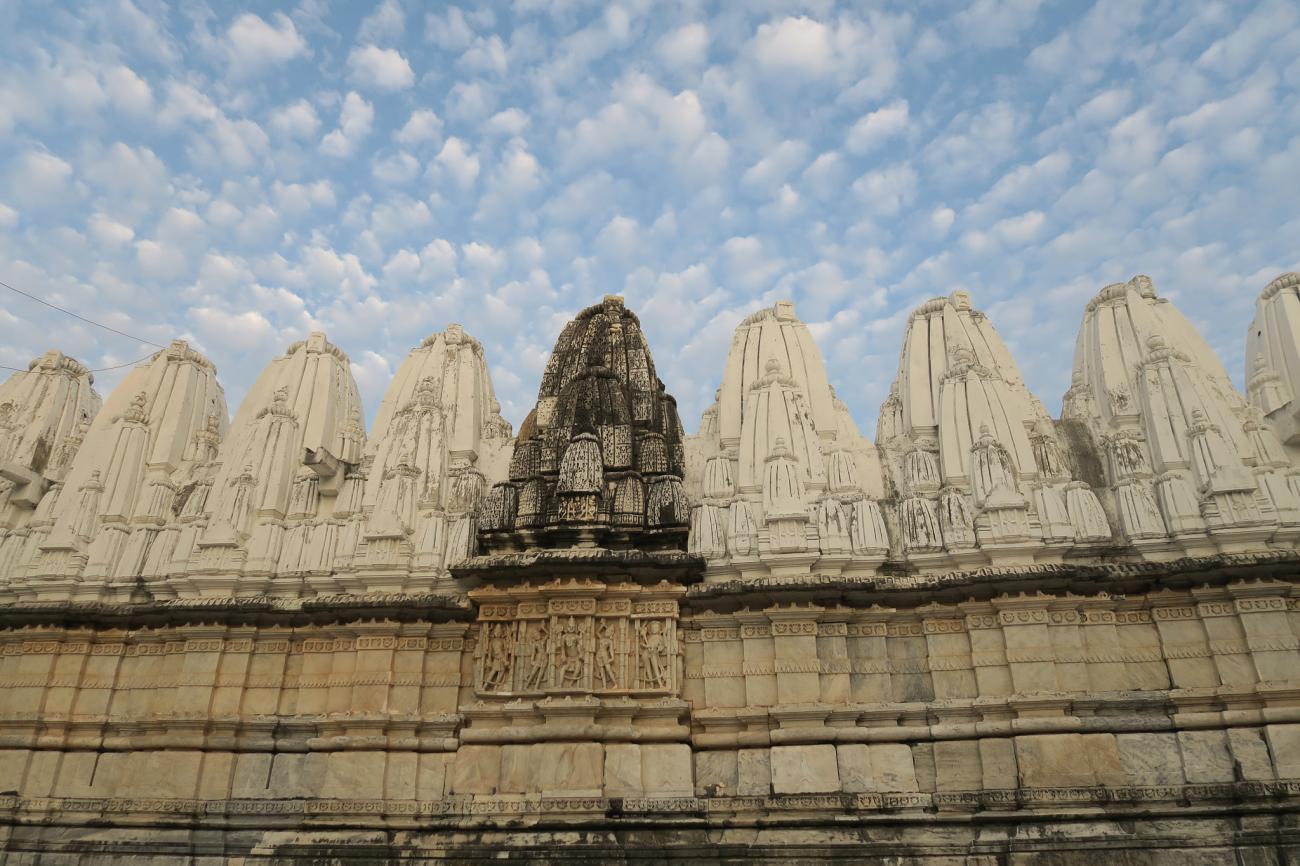
Rabari goatherds, turbaned red,
herd their flocks along the road we take,
and graceful women walk with silver pots
beside the highway where we must “drive carefully to live joyfully”.
Past the Jesselmary camel and it’s loaded cart,
dreaming of running through the desert
as the kingfisher flashes swiftly past.
At the one-time capital, Patan,
the weaver of palota bends his head,
learns the patterning of elephant and of parakeet.
Practised hands knot stranded silk,
knotted with uncoloured cotton thread,
which later will be dyed with indigo
and cochineal for darkest blue and deepest red.
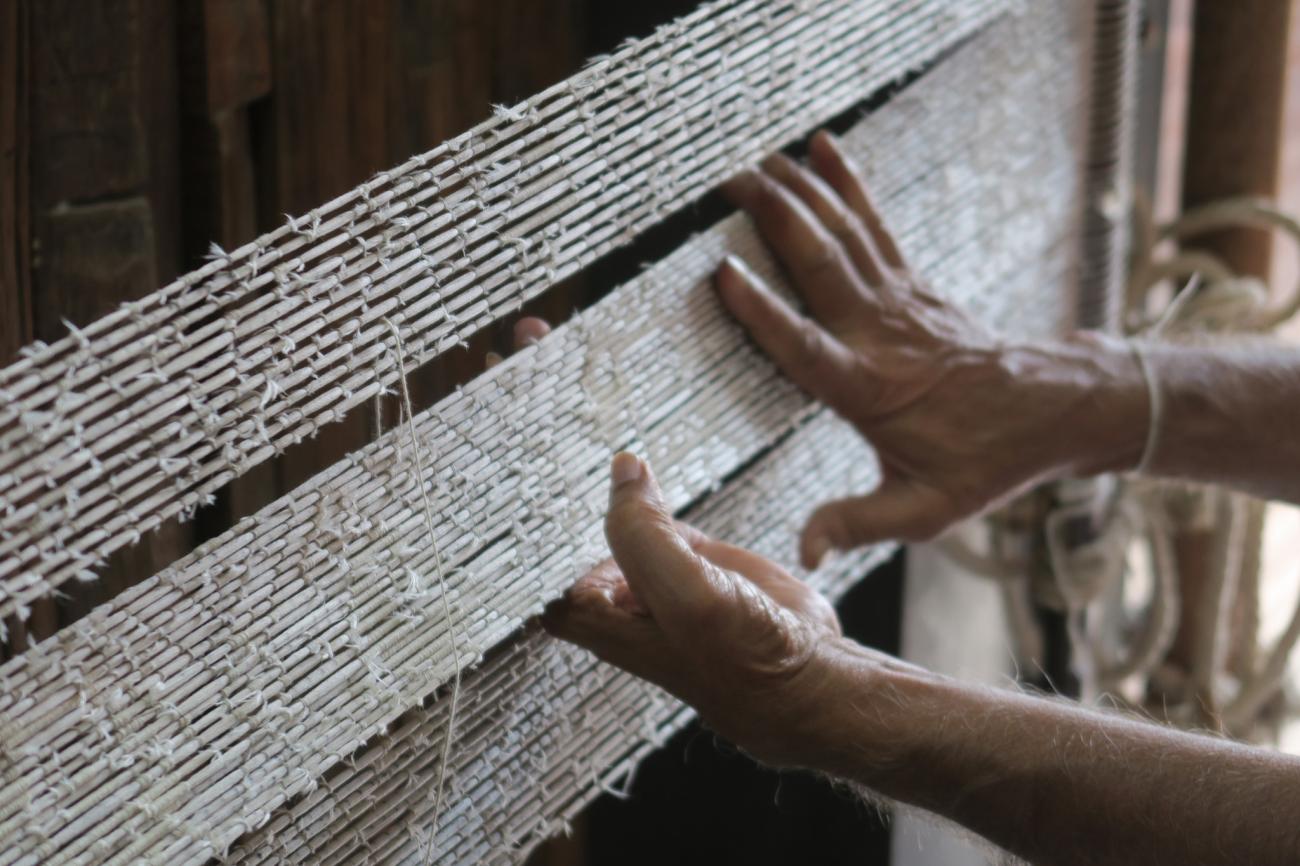
On past hennaed camels walking roads
flanked with tree trunks spotted red and white,
where men and women in procession
dance in honour of their local gods
alongside donkeys, polka-dotted pink,
until we come to yet another wondrous sight
We clamber down the crisscross steps,
a waterfall of families in the autumn sun
capturing the day in countless snaps
and angled selfies - just another one?
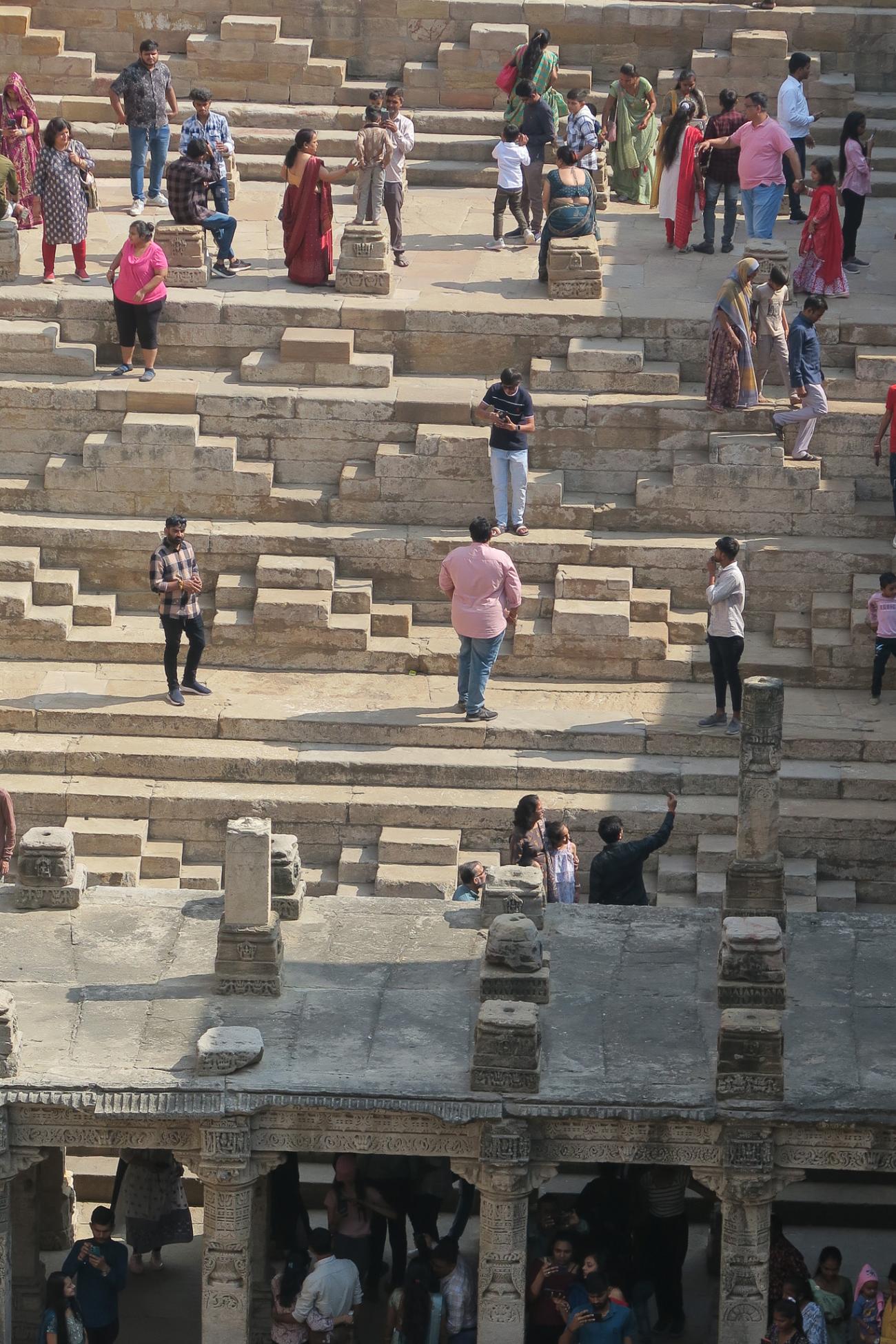
Worship of sun god and of selfie
where cameras point at lotus flower
and foreigner and a thousand phones
capture the coupling on the carved pillar.
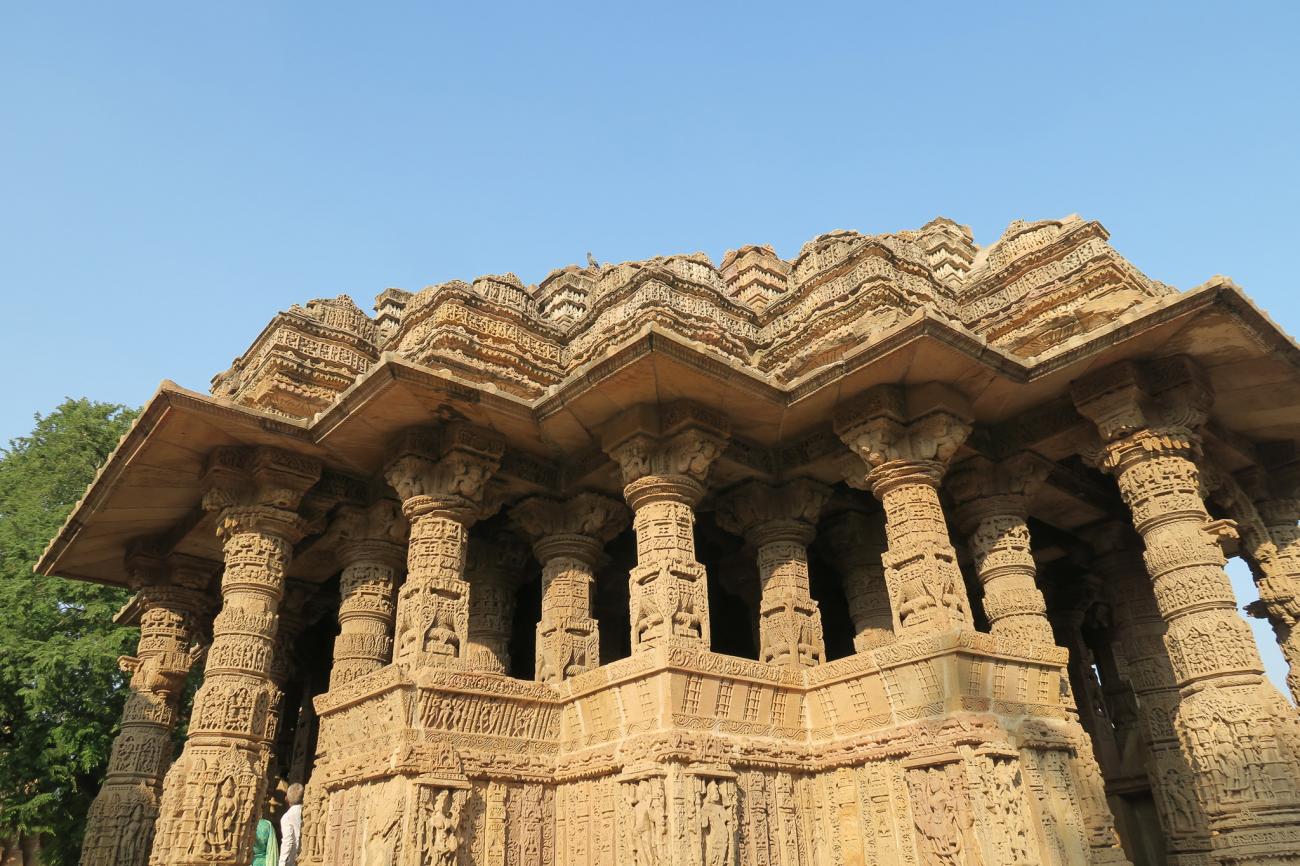
Past the family travelling with their stove
and the goat riding in a tuk-tuk,
past the field fenced with coloured saris
and on to Little Rann of Kutch.
Riaz drives our jeep next day and soon we learn
about the lapwing and the whiskered tern.
The silhouette of drongo, fork-tailed on the wire,
the graceful heron flying higher.
The pale flamingo and the pelican
On the salt flats of the Rann
with cormorant and mockingbird.
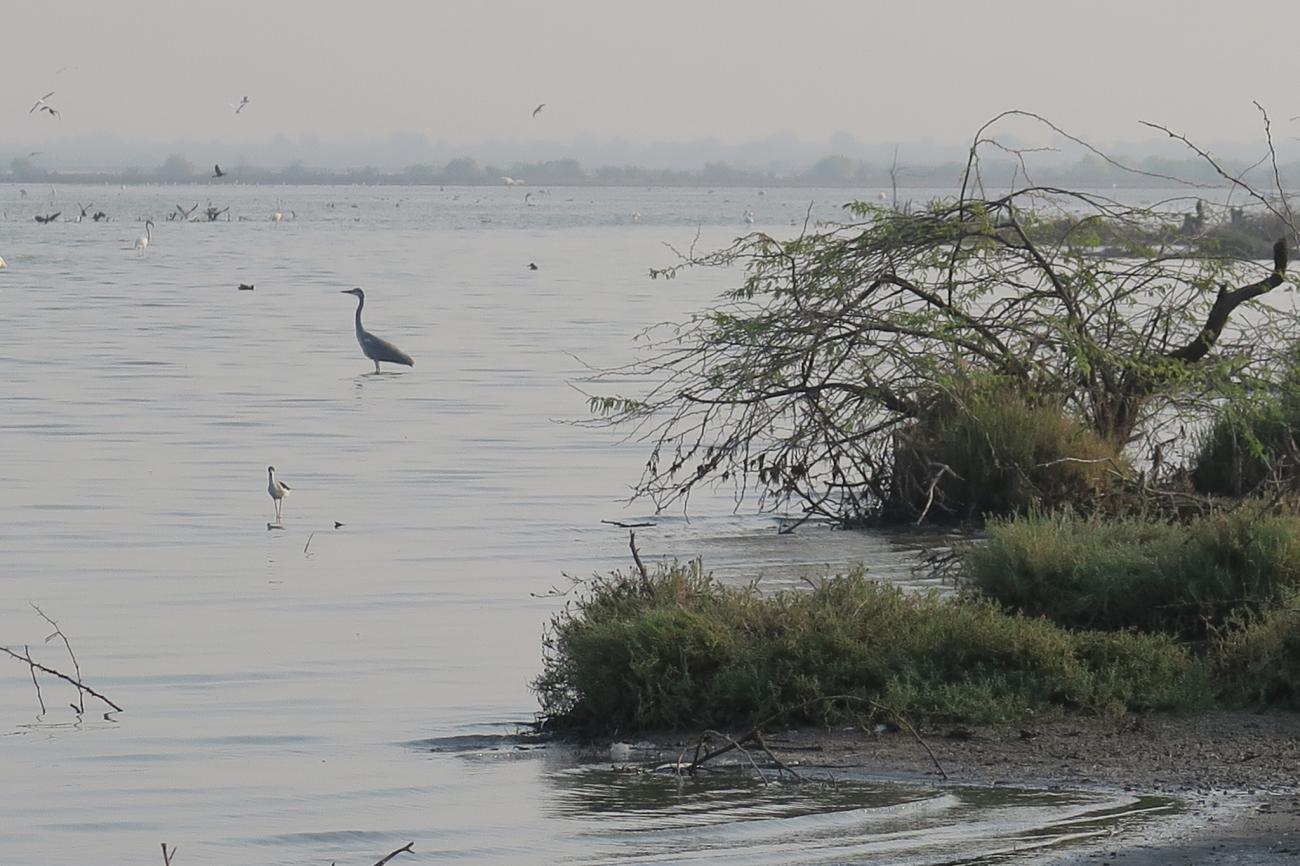
And Booted eagle high above the herd
of wild ass grazing on the plain,
dry now after earlier monsoon rain.
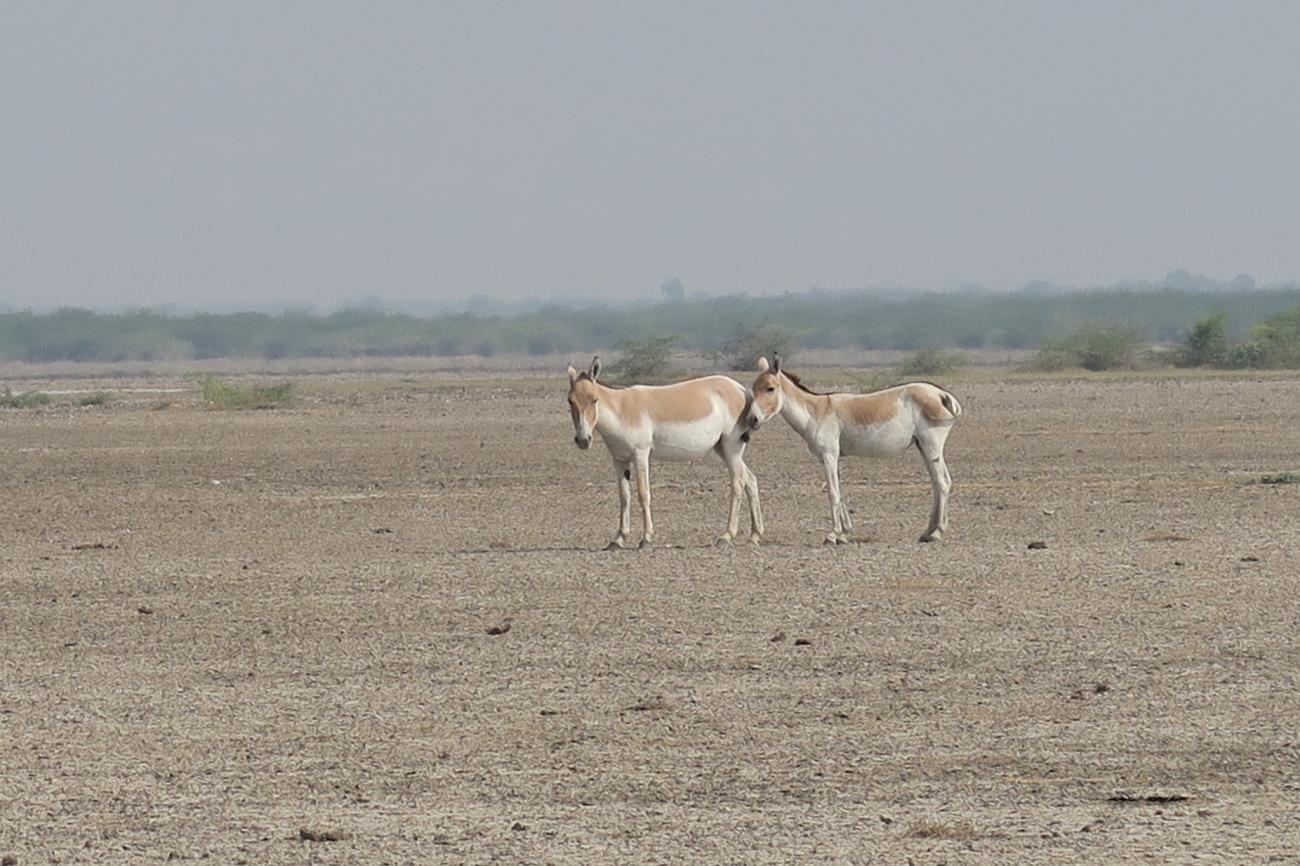
Beaded work of local women
later laid out on the ground
where hopeful hands reach out
and souvenirs are found.
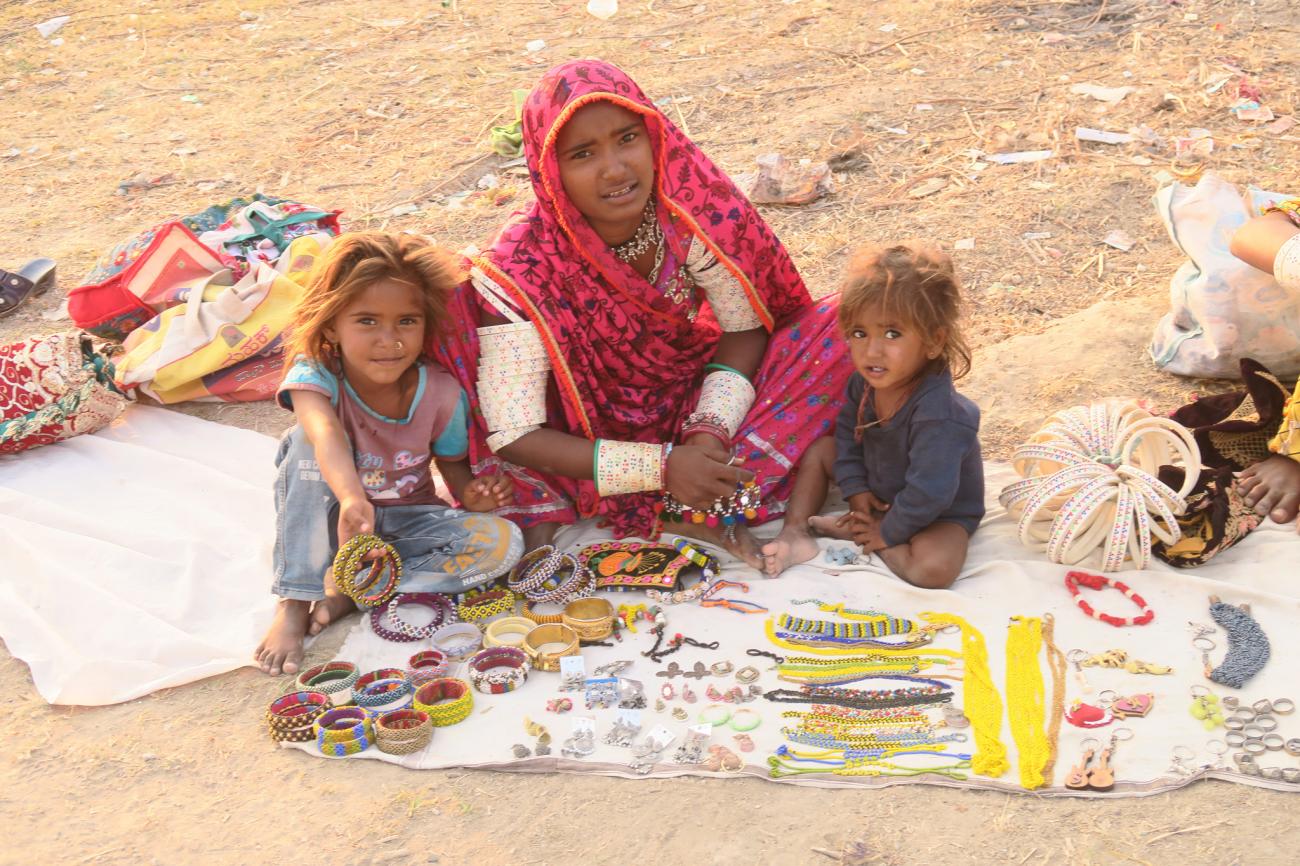
Glance into doorways
where the baby’s cradle stands,
the shine of metal kitchen pots
washed and dried with hennaed hands,
the patterned arms of women,
silvered toes barefoot in the sand.
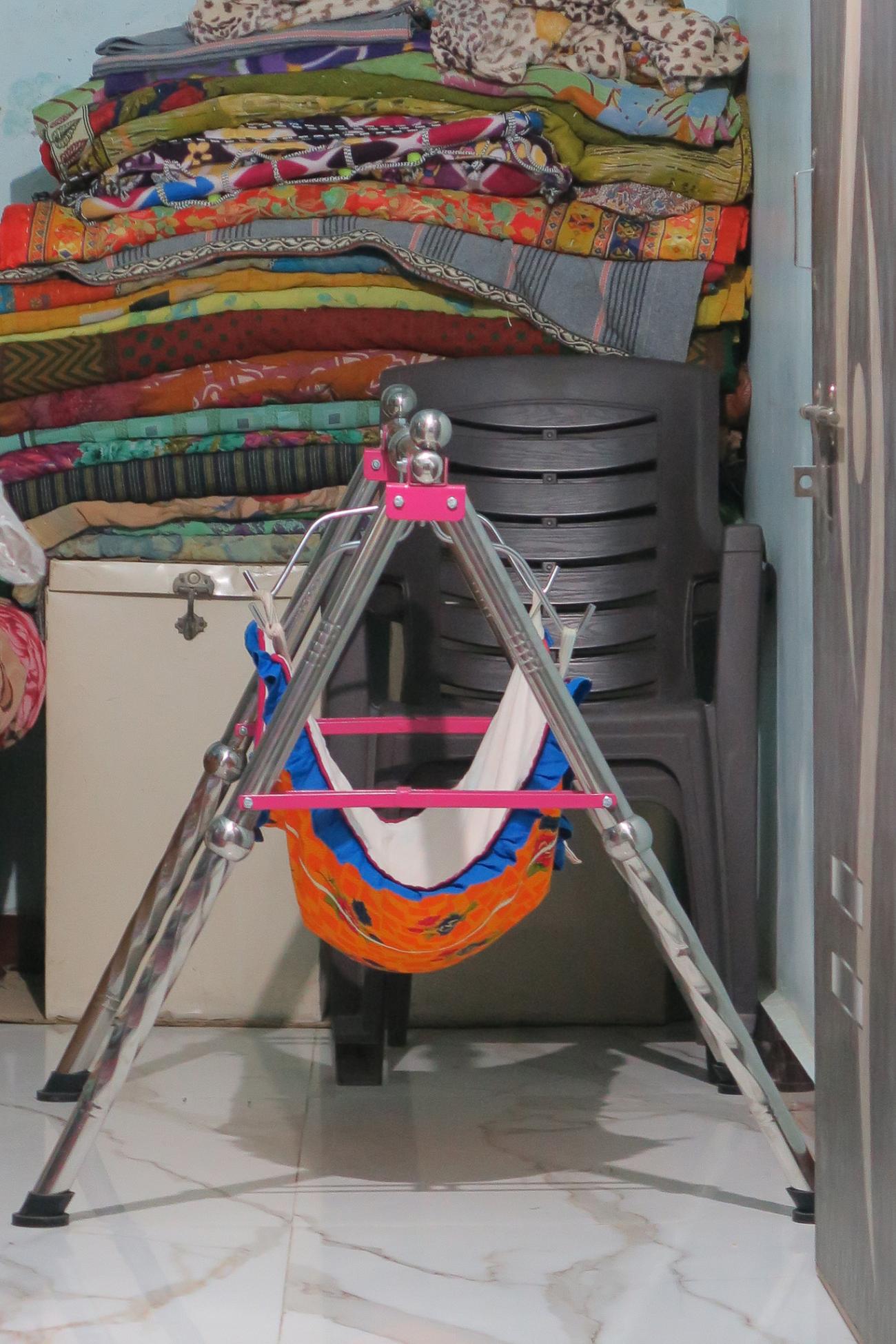
Camel harness, and embroidered throw
the work of tribal women, each unique
is shown in exhibitions that revere
their family’s inherited technique.
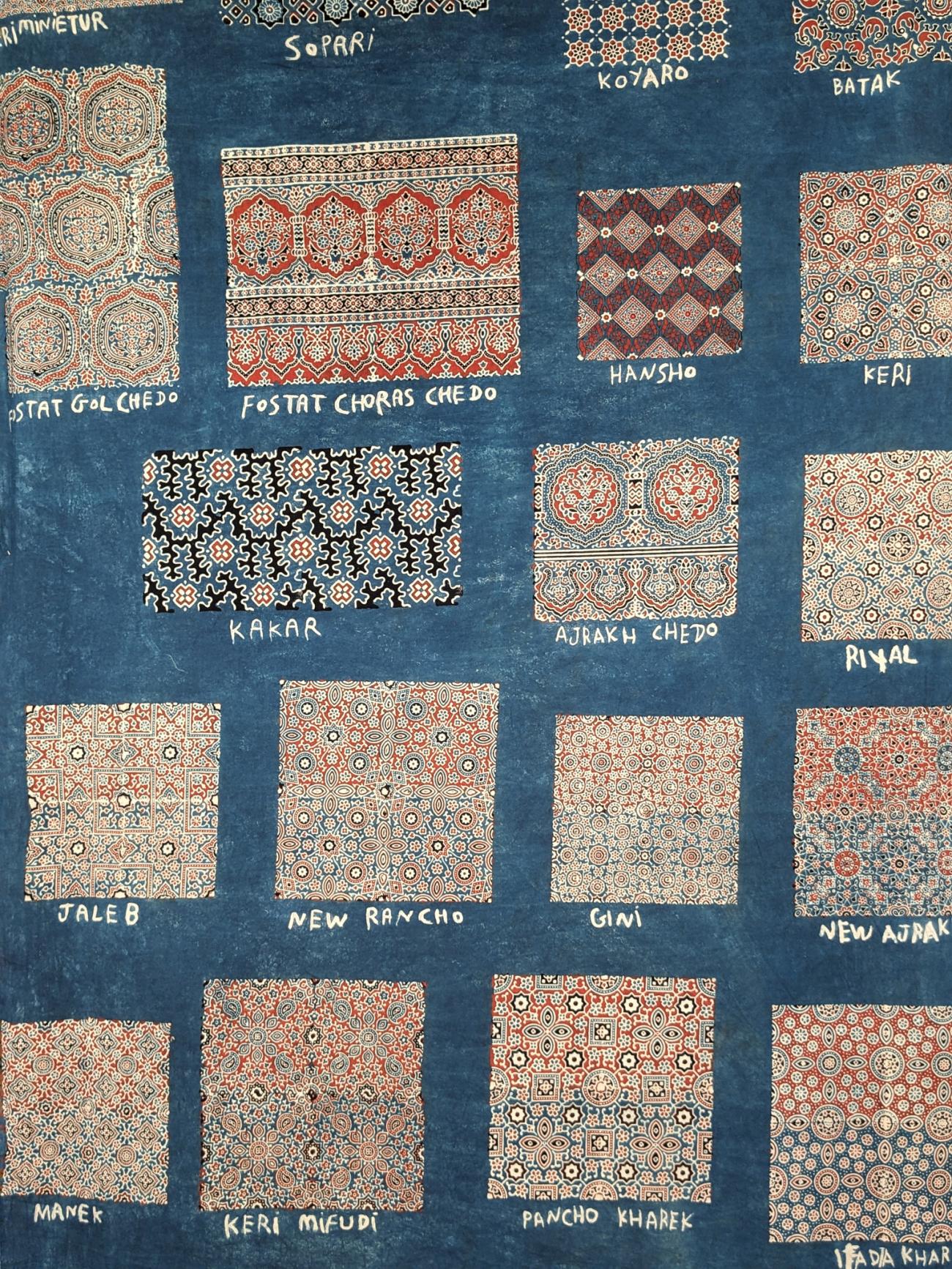
On Saturday we drive to Samrasar
where the weaver takes the carded wool,
turns the wooden wheel
and spins a spool of creamy thread,
woven seated at his loom, the shuttles’
rhythmic dance across the warp and weft.
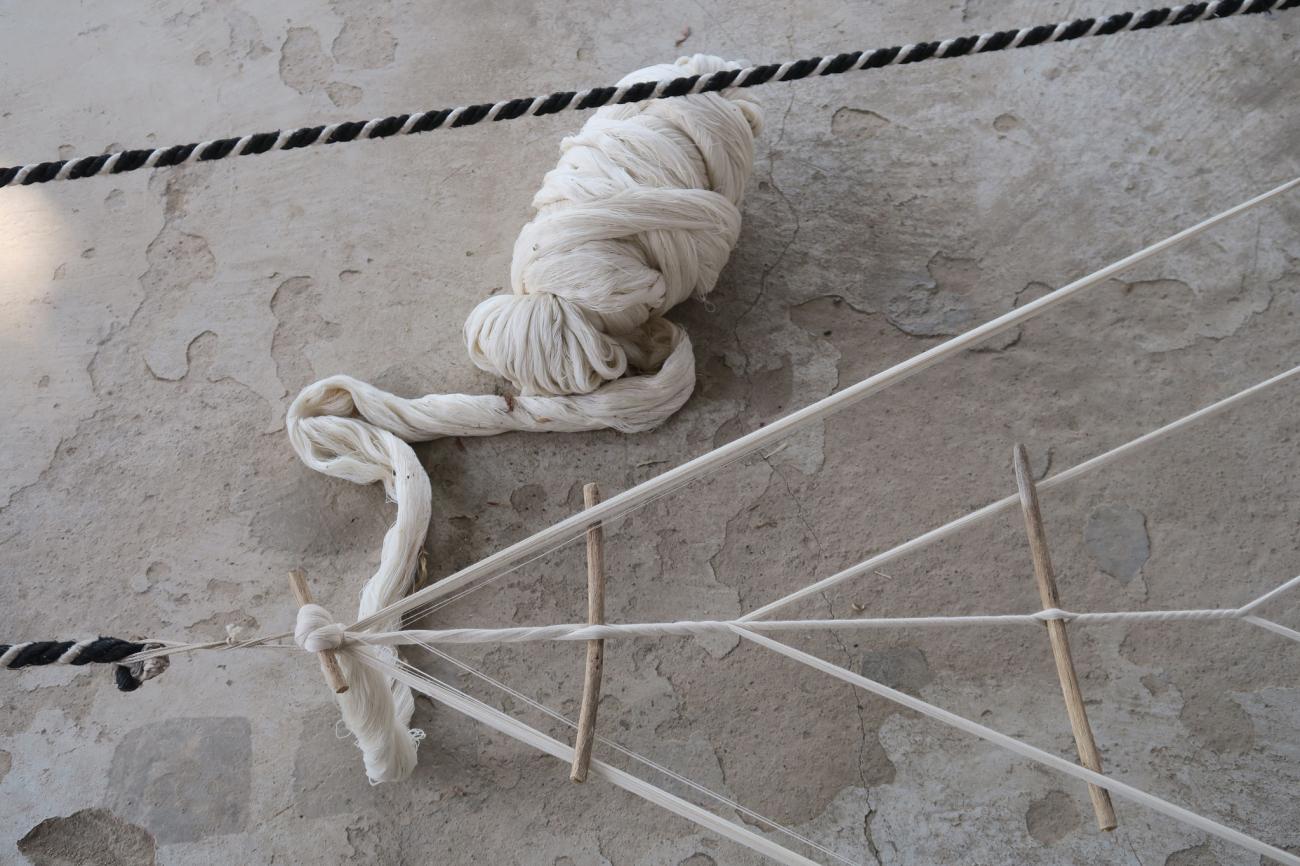
And deft the dancing hands
of women quietly embroidering a throw
with unmarked stitches at Kala Kalesh
and made to look so effortless to sew.
The patterns memorised and handed on,
and stored in antique pieces so the skill will not be gone.
The fabric of a lifetime told in applique,
the moments lived and loved along the way.
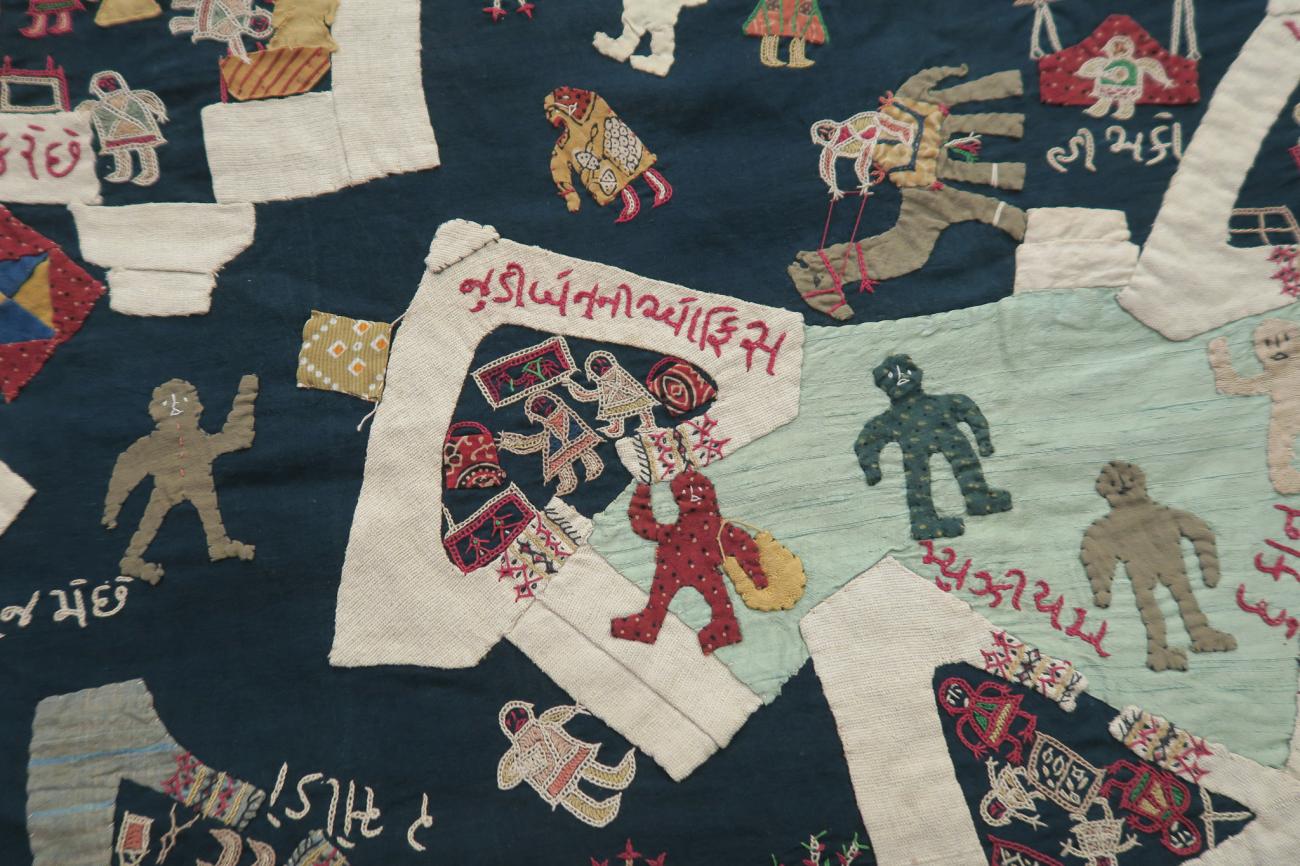
And three Rabari women tell us
how much embroidery gives them pleasure,
fish bone stitch creating garments
their families will treasure.
And Nitin just can’t hurry us at all,
as we buy doll and quilt and shawl,
tells us there’s no more time for stopping,
we’ve just spent far too much time shopping
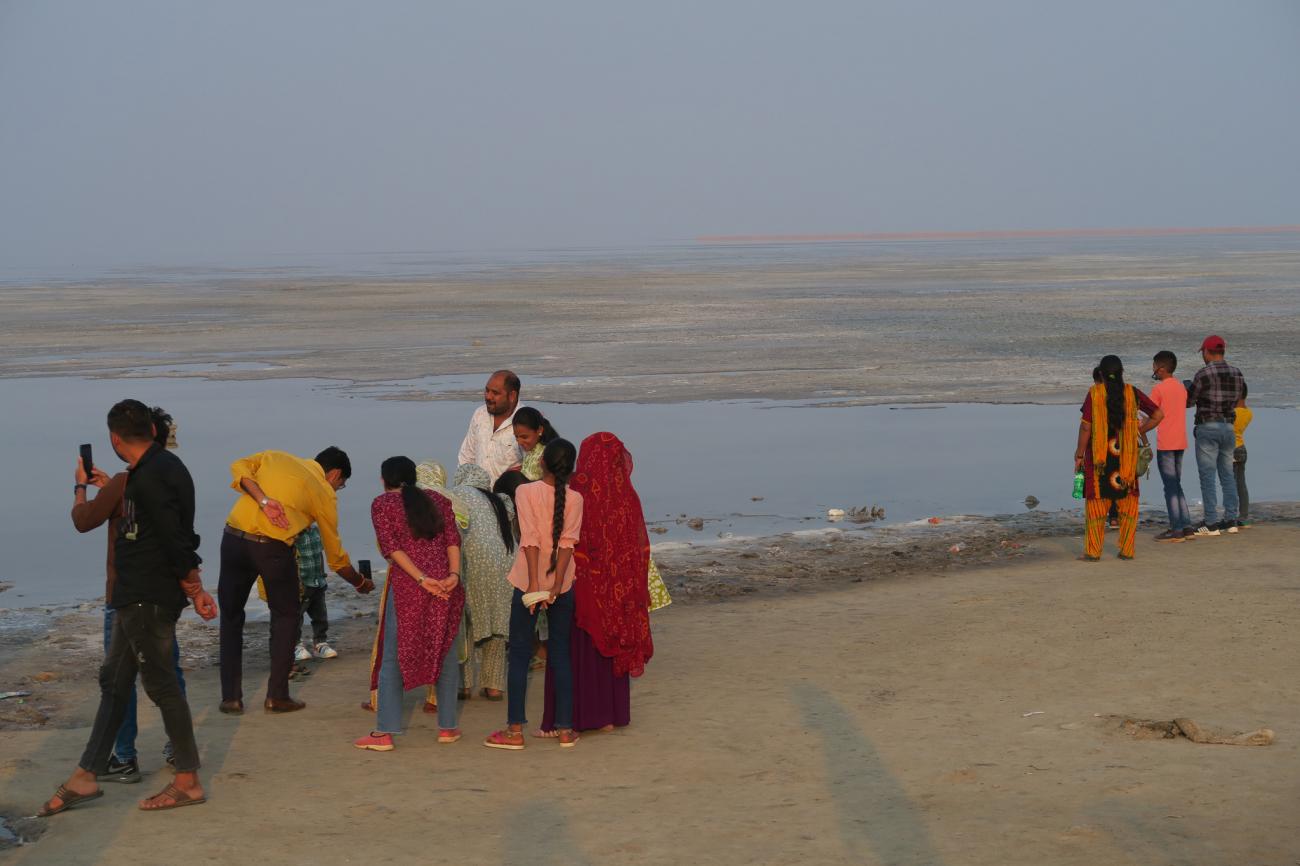
Then on the salt flats at White Rann
we join the throng of families some hundred strong
where royal blue bride is posing with her man
and cameras click as we all wait to watch the setting sun.
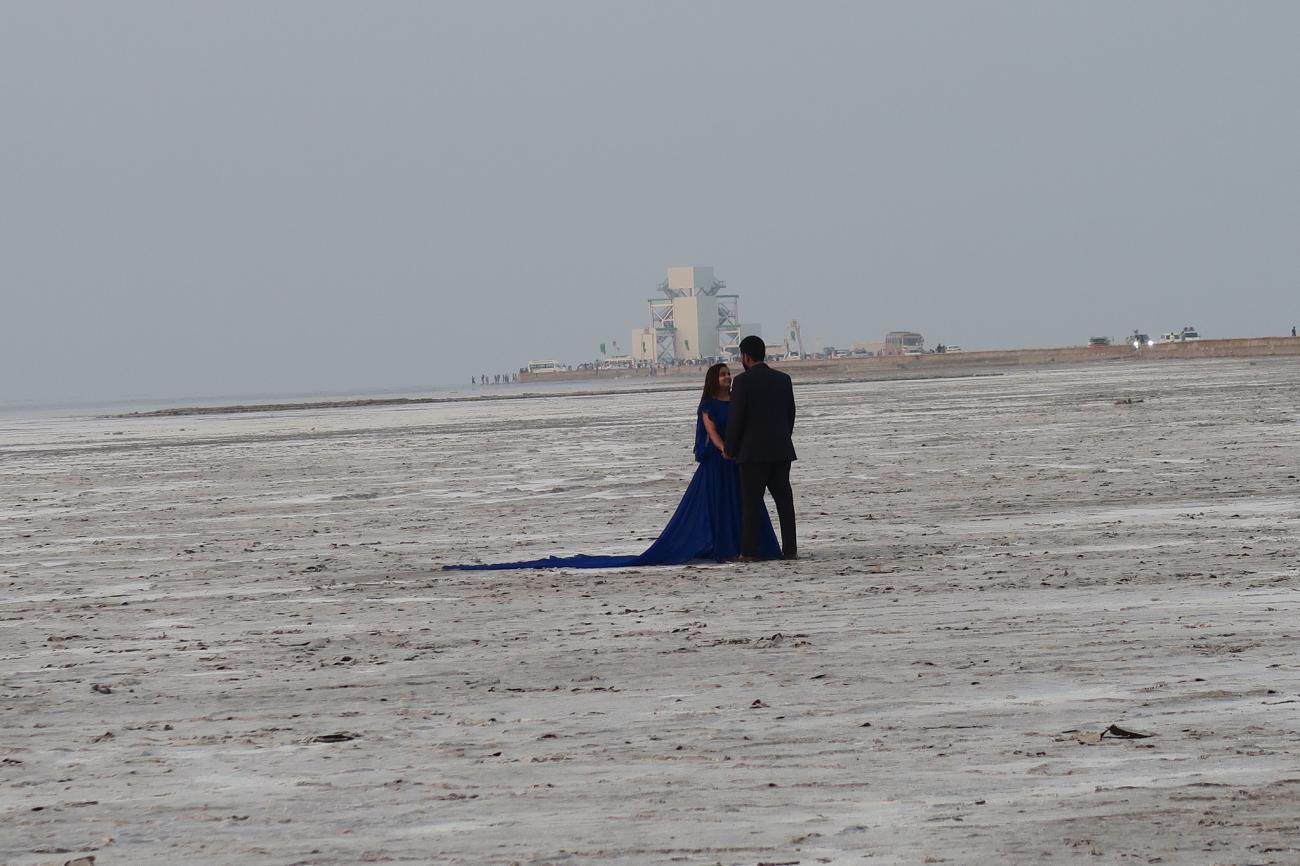
At Nirona, steady hand of painter
shapes the Rogan art,
from remembered patterns
he has learned by heart.
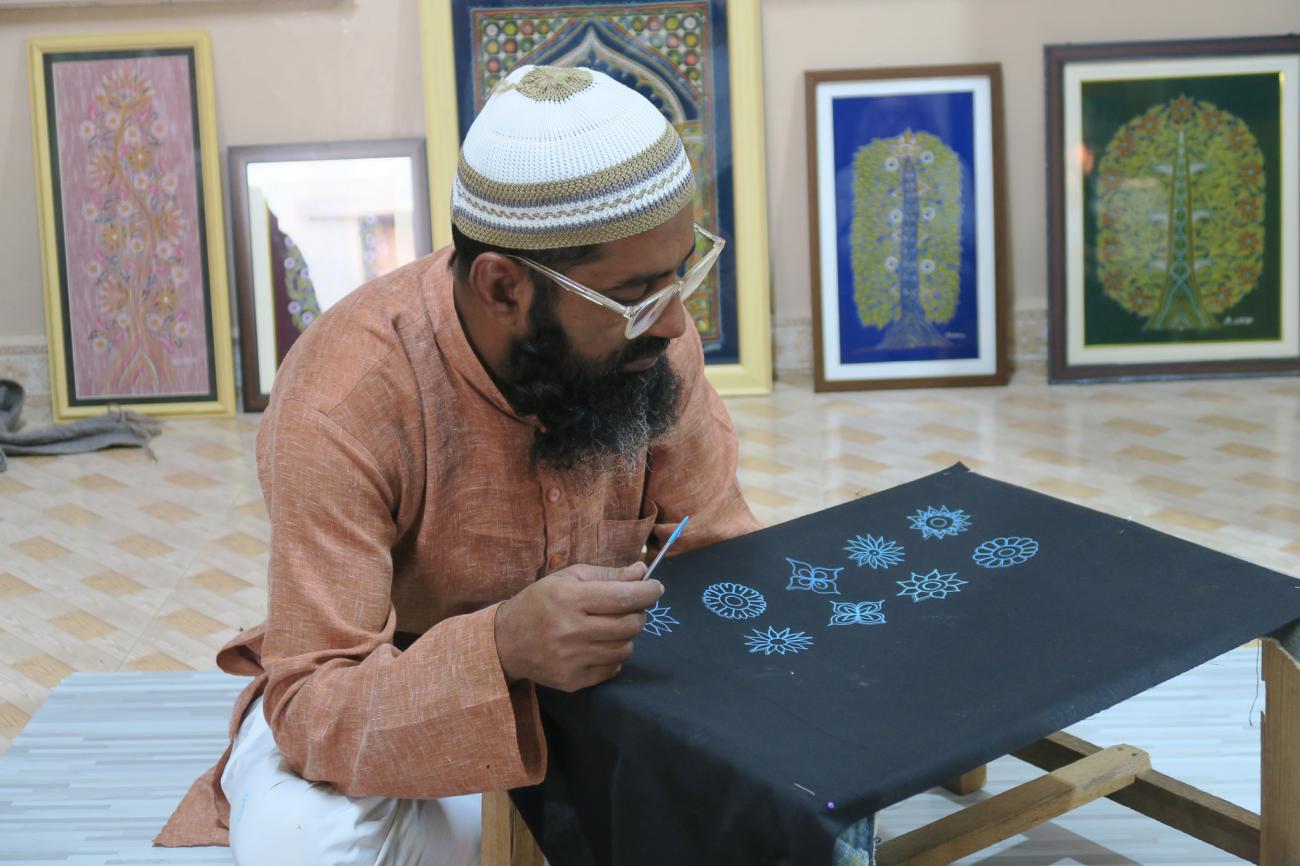
A cowbell made by coppersmith,
anvil like a tent peg in the sand
as he beats the metal
using both his feet and hands.
The lacquer worker turns the handle of a wooden spoon
and patterns it in yellow, red and green
to join the rolling pin and spatula
with added peanut oil to give an extra sheen.
Then on to the Arabian Sea
and evening walk upon the strand,
fragments, tinselled sari scraps
red and gold, abandoned on the sand.
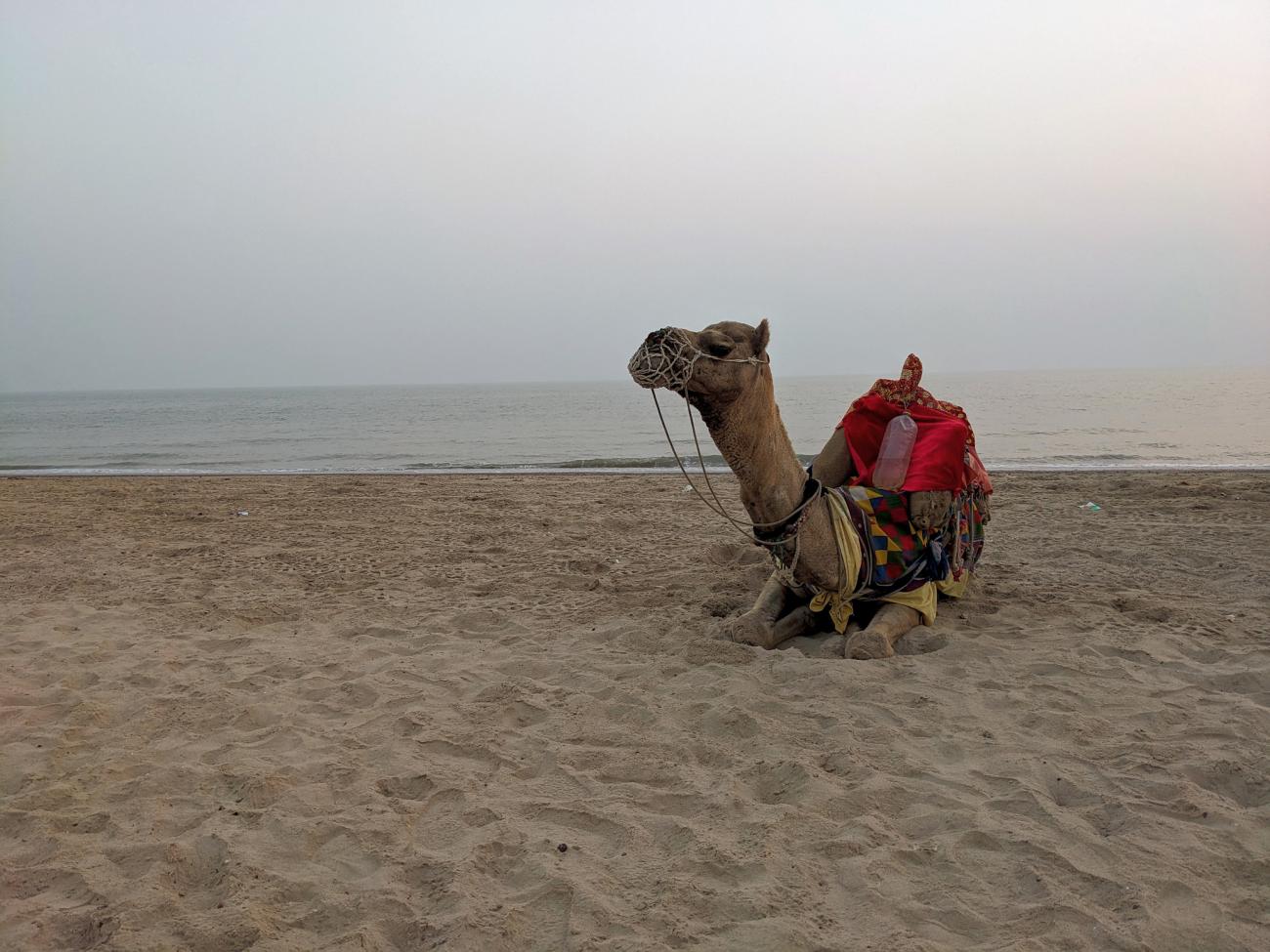
On the Rukmavarti river
stop to see the Salwood dhow,
wooden ladders taking workers
upwards to the giant prow.
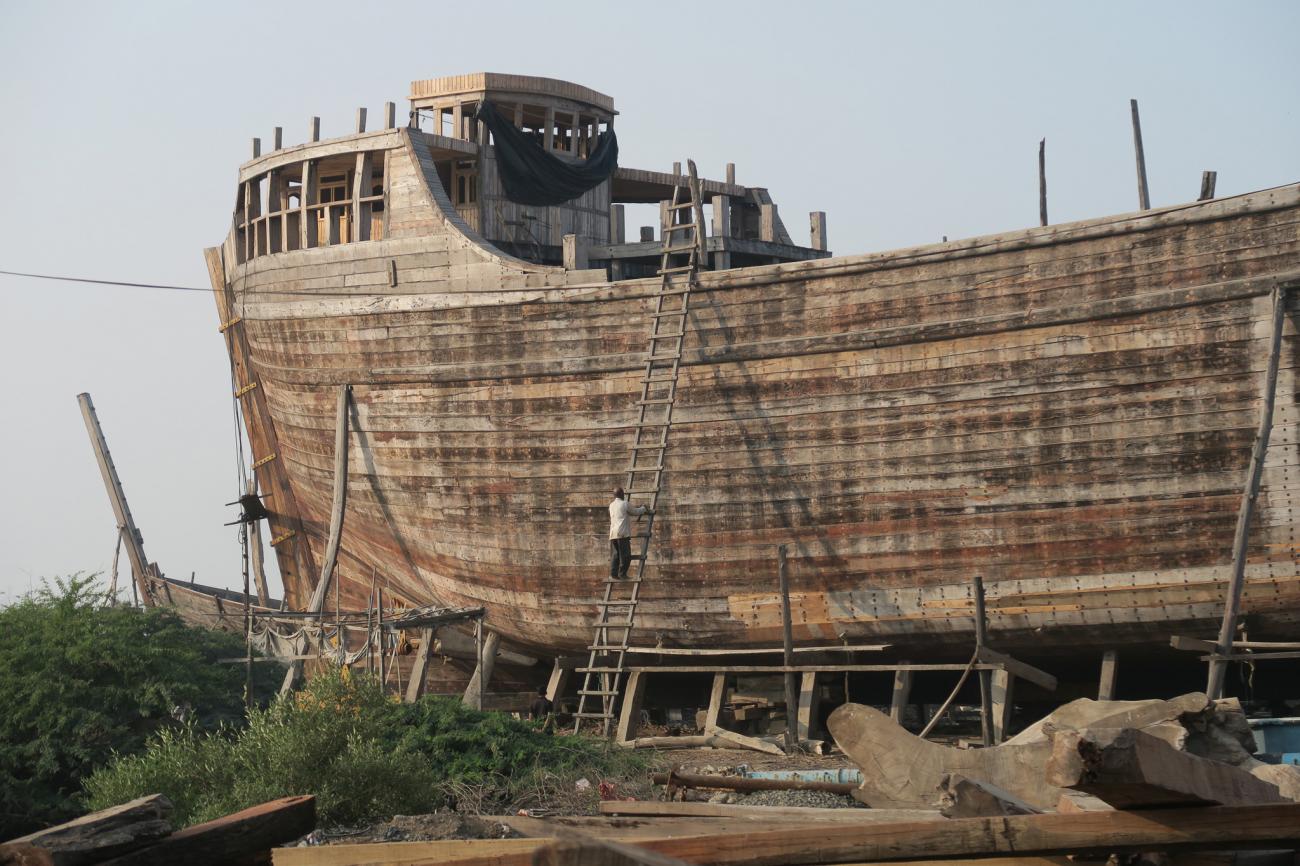
In Gondal, Naulakha
is the palace of the king,
where teapot, doll and turban]
are just some of many things
Collected by his wife
alongside his carriages and cars.
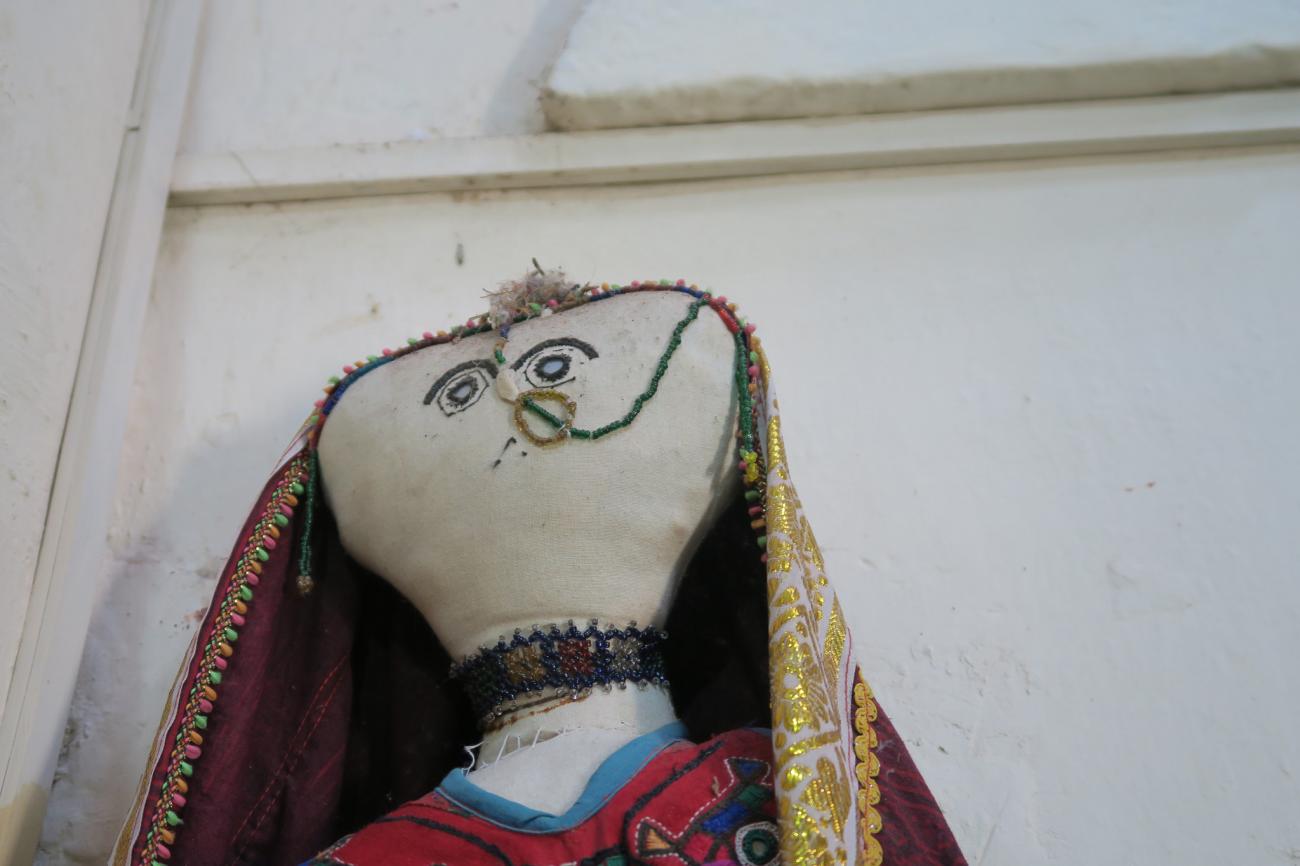
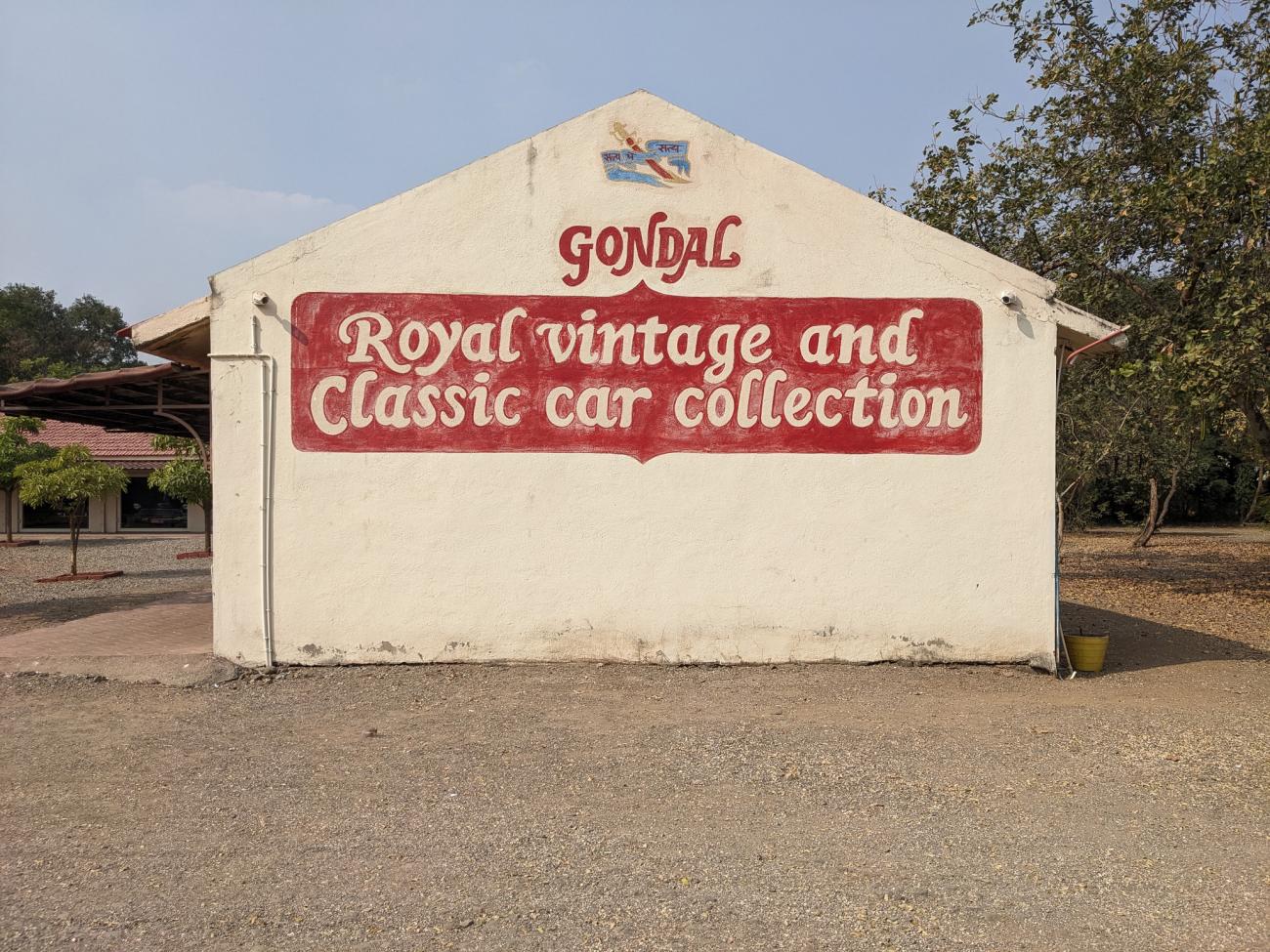
and afterwards we head toward
the colourful bazaar
and on into the market
where the veg is on display,
the cabbage, and the bitter gourd
brought fresh to town that day.
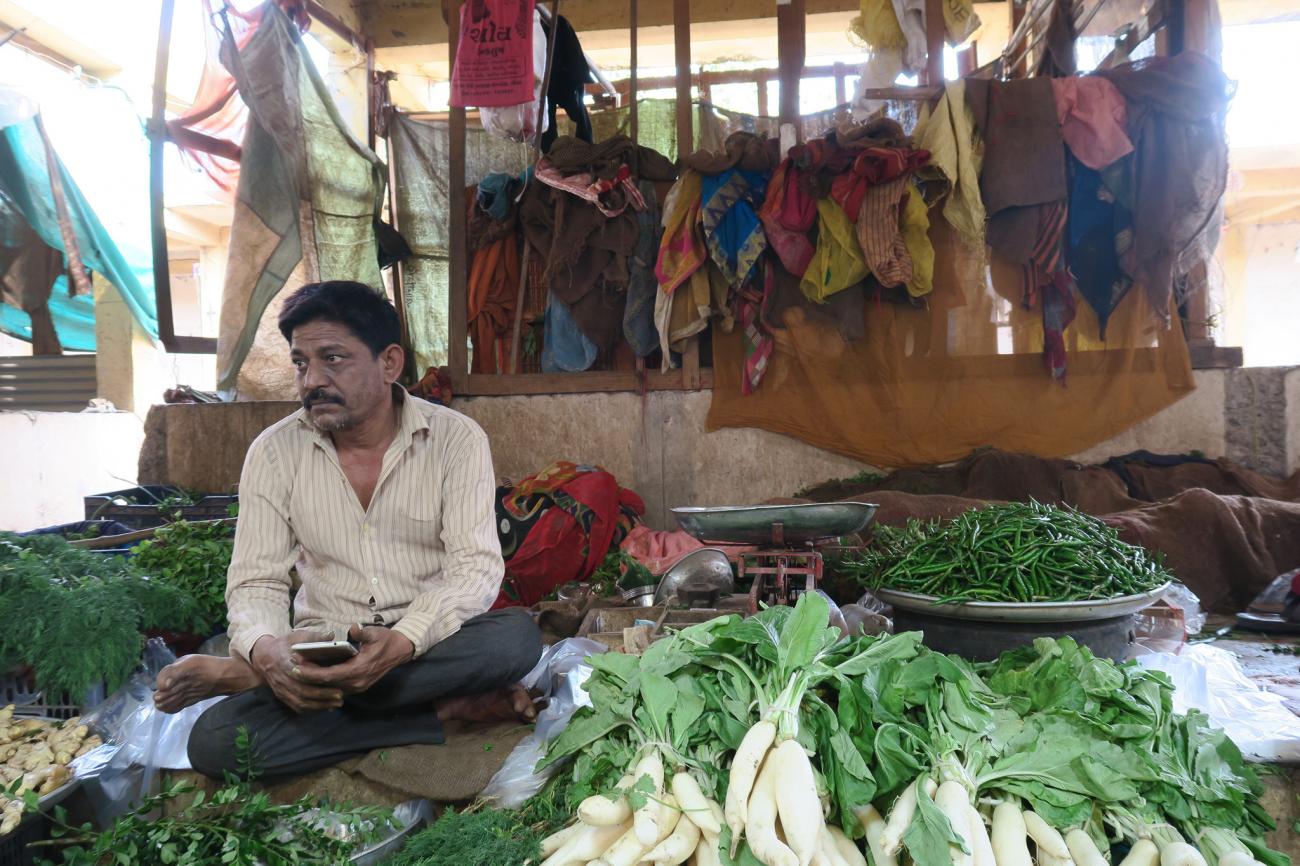
At the Ayurvedic centre
bottled cow pee being made,
while women weave the Khadi
of the very finest grade.
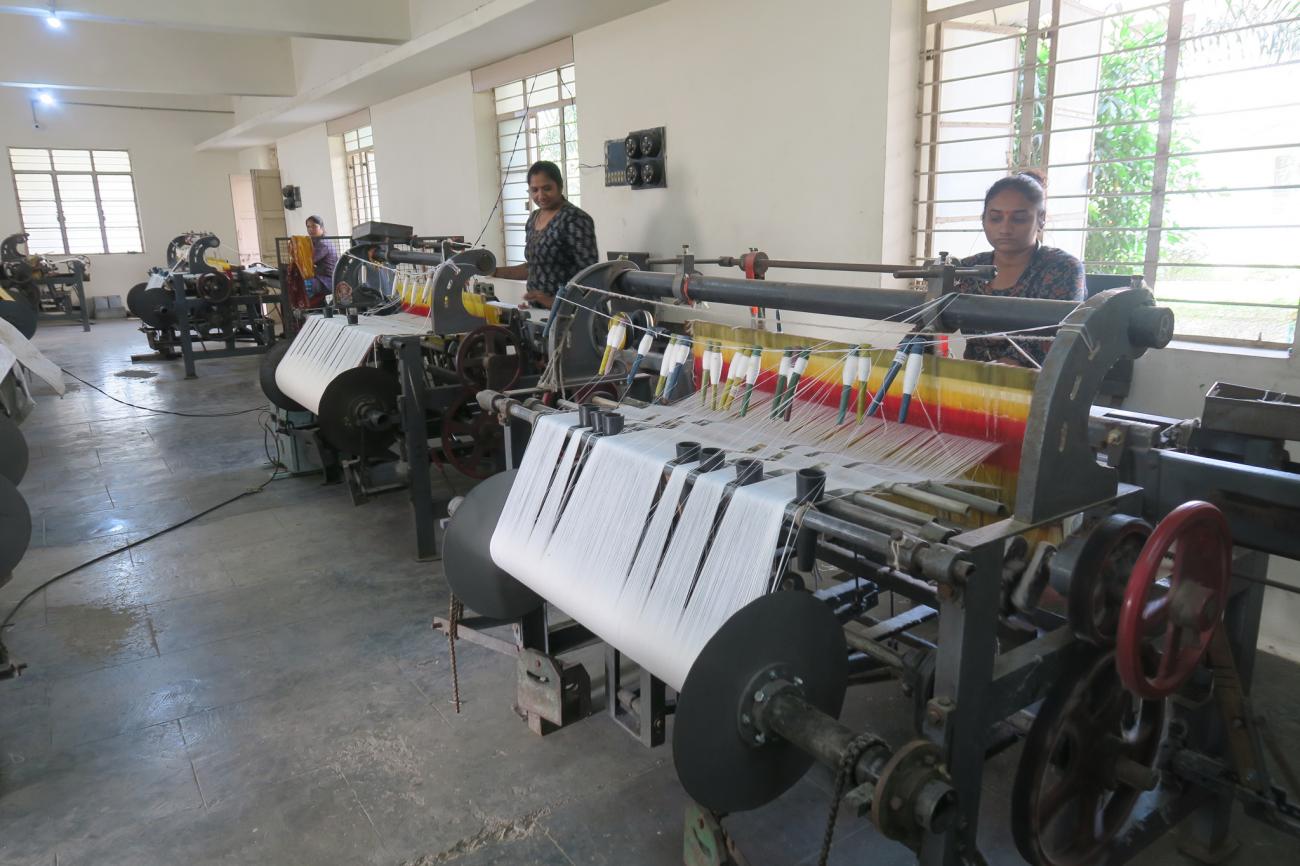
And later in the evening
we all go to the Aarti
which, though daily time of prayer,
feels rather like a party.
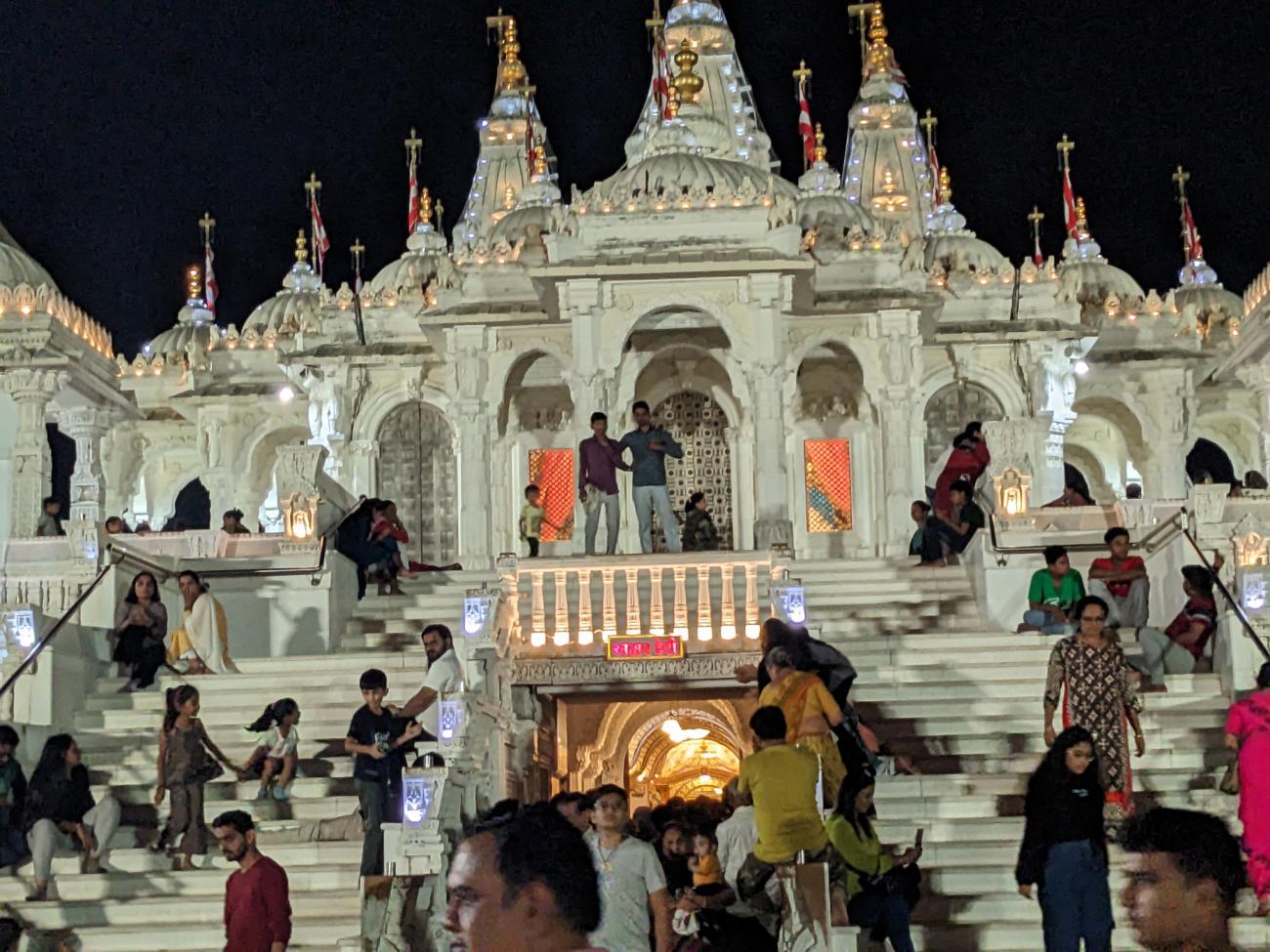
And it’s truly a great privilege
that the group of us is there,
as we watch the evening ritual
and the Son et Lumière.
At the foot of painted steps
we start our early morning climb,
in the half-light as the village wakes
walk up slowly, take our time.
Some choose to take it easy,
carried up on Dohli chair,
fixed to sturdy wooden poles
and quite a lot of weight to bear.
The effort’s more than worth it
for the sights the climb affords,
the temple complex fabulous
the morning filled with rich rewards.
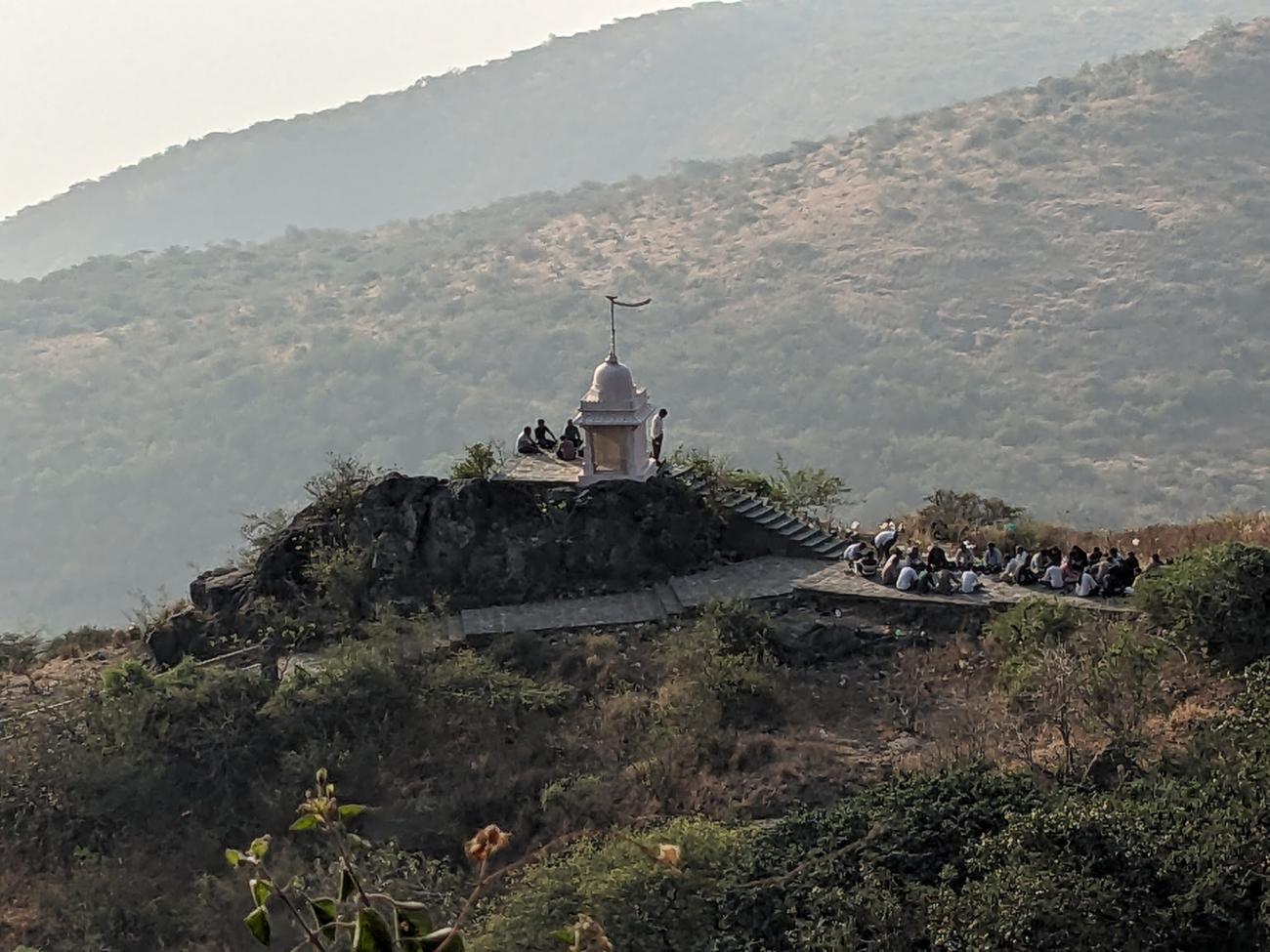
The evening too, as small girls dance,
mirrored caps on tiny heads,
stick and baton, twirl and prance,
saris swirling green and red.
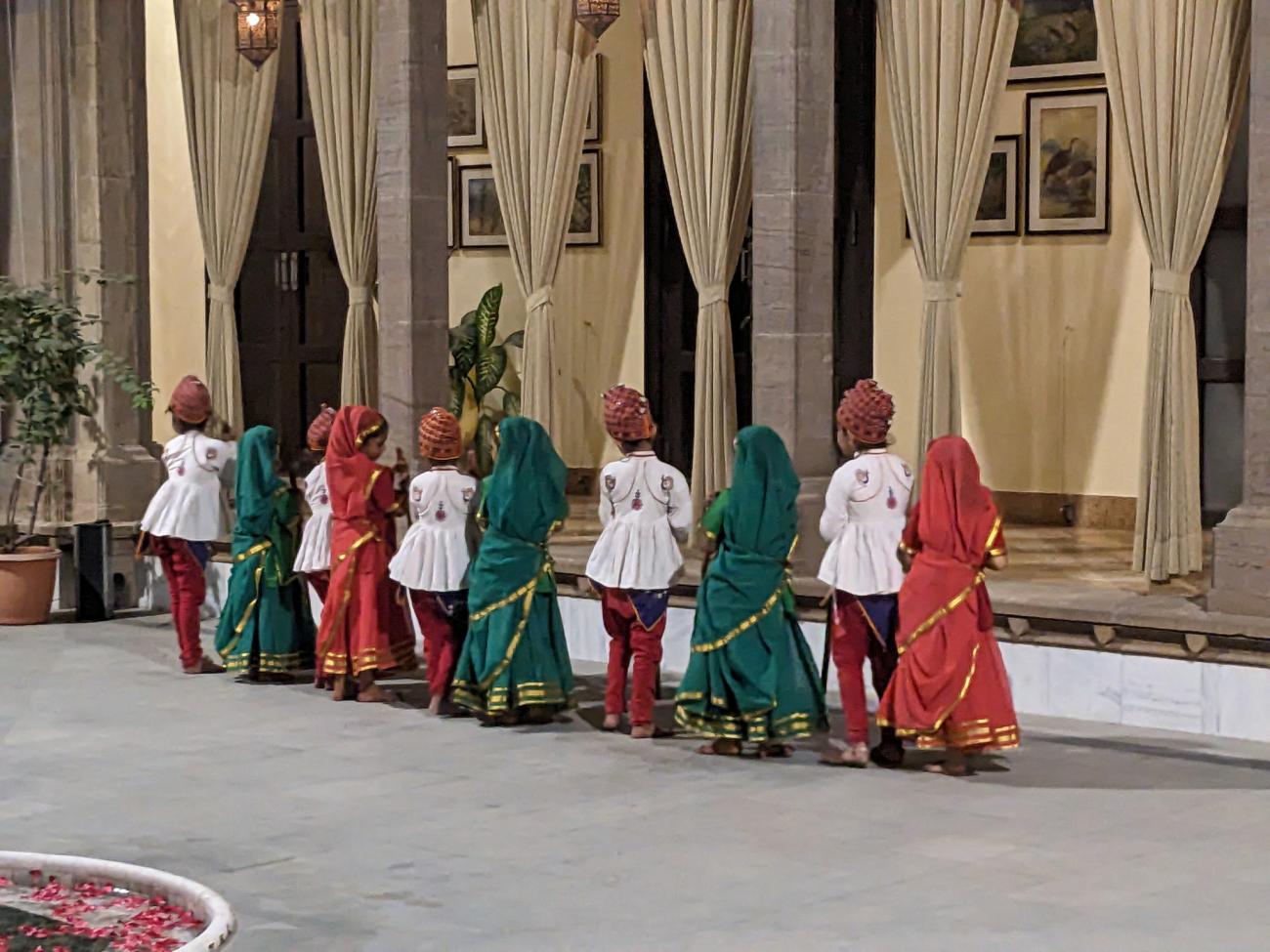
At Laxmi Vilas Palace
stained glass lights the Durbar Hall,
the lovely floral-patterned floor,
mosaic, gold leafed, on the wall.
At Champaner, carved pillar
and the curve of minaret,
lattice screen and window,
chiselled flower and stone rosette.
And Annie doesn’t breakfast,
While Barbara’s always first in line,
and Vivian’s not so keen on birds
while Lynne and Les like birds just fine.
And Andrew is the sweeper,
bringing up the rear,
and Jane attracts the selfies
with those who love her hair,
and Meryl makes her cordage
while Carol makes us laugh
as we do our laughing yoga
doubled up in half,
and Caroline likes textiles,
the weavers at the loom,
and Richard is observing,
records with point and zoom
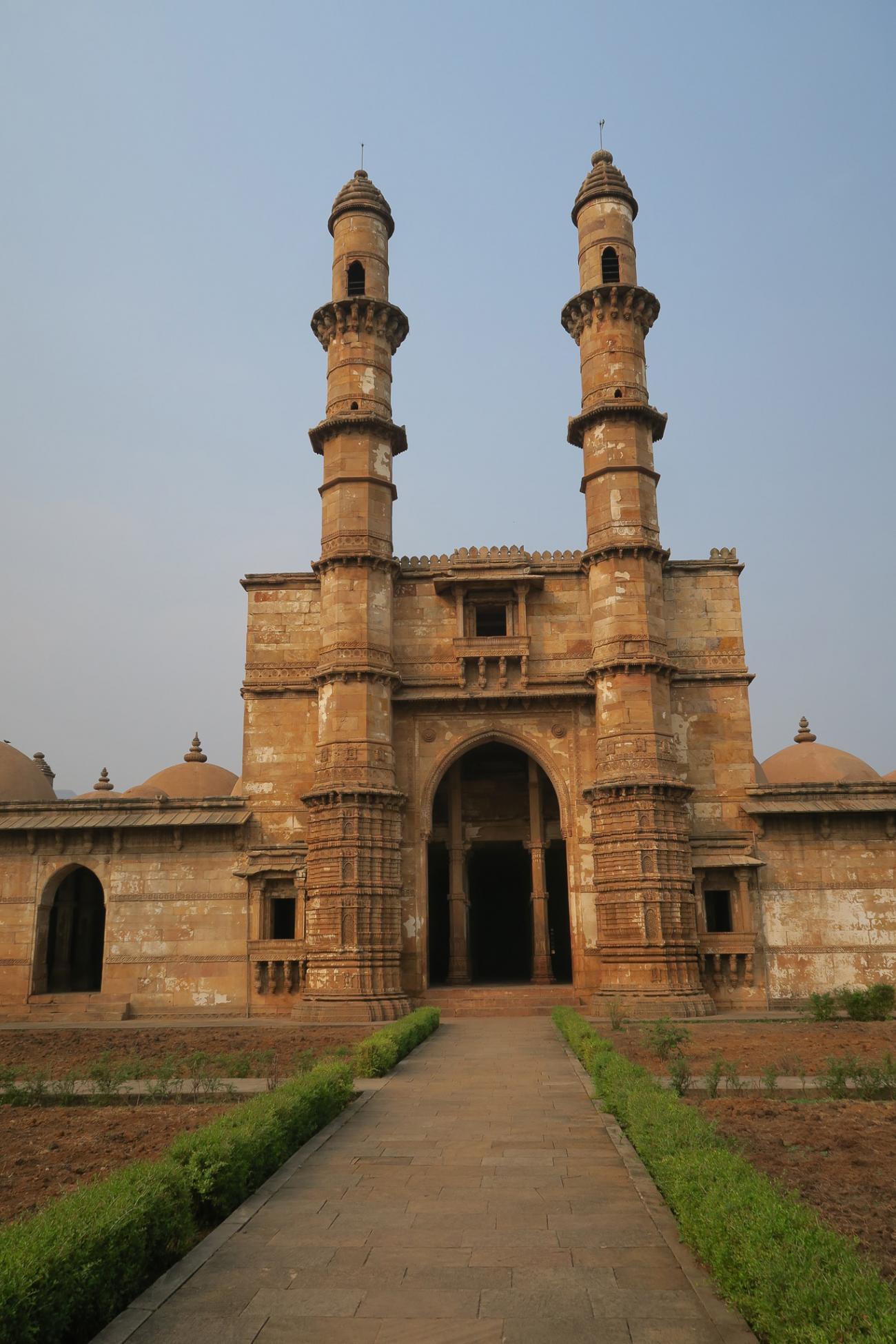
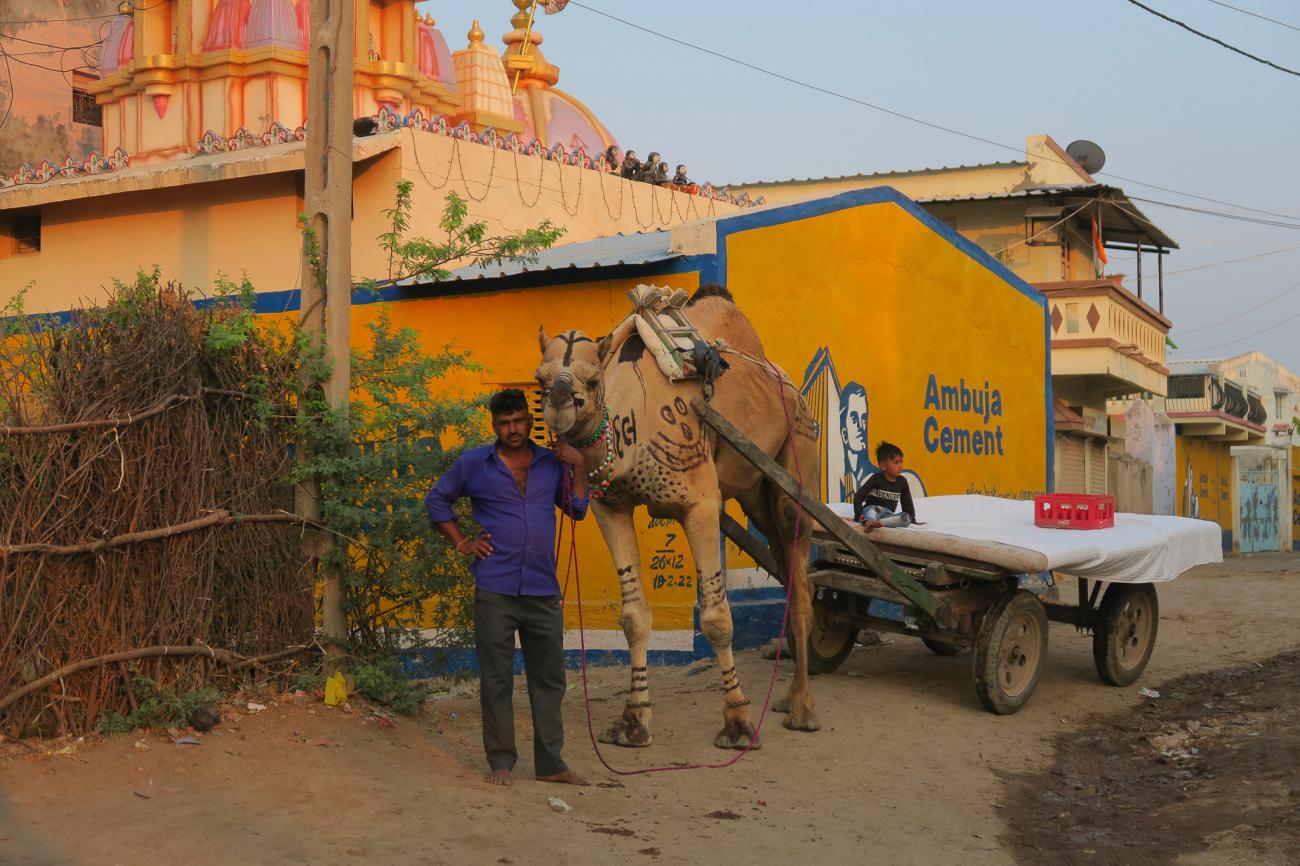
As we’ve shared the
roads with camels,
with tractors, trucks and cars,
Kalesh driving carefully
on bumpy roads for hours
While Ramesh has made sure
that we all stayed well-hydrated
(The benefits of sip-sip
Just can’t be overstated).
They’ve kept us safe and comfortable
over very many miles
and always at the journeys end
they end the day with smiles.
And although we’ve gone without
a beer or glass of wine,
lime soda and sweet lassi
have suited us just fine.
So, we’ll not forget the time we’ve had,
which Nitin’s made so great,
with knowledge and with humour
as we’ve travelled through this special state,
which has offered us its landscape,
it’s customs and it’s ways,
and given such a wealth of things,
in only fifteen days
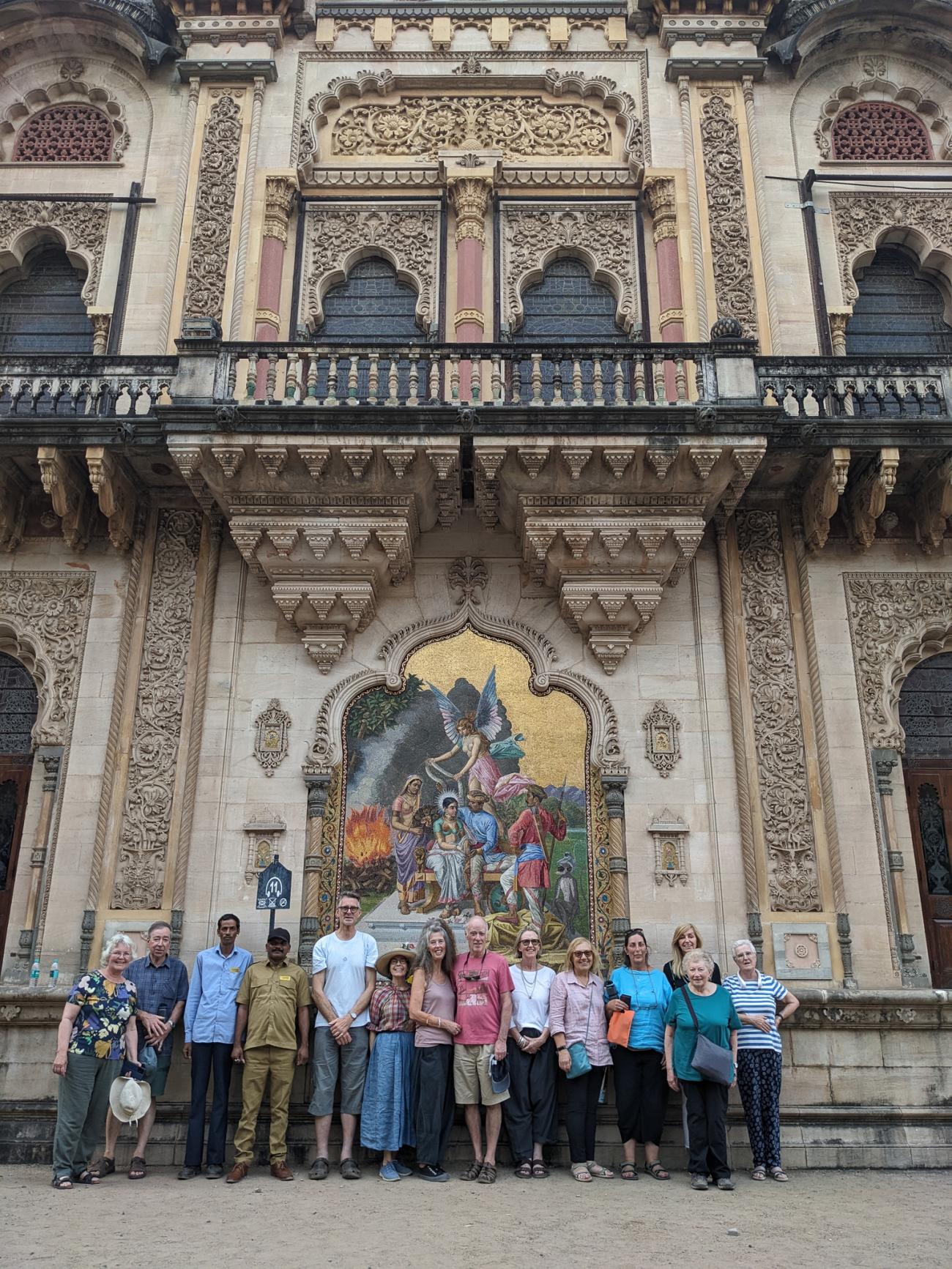
But Nitins not just guided us,
he’s shepherded the group,
giving tablets to the sick
and bowls of chicken soup.
Offered snacks of cashew nut
and crackers on the bus,
attended to the needy
without a hint of fuss.
He’s chased Jane’s missing laundry,
shirts that Richard left behind,
and it’s never too much trouble,
which is really very kind.
In Gondal got us front-row seats
for us to watch the Aarti
and given us a little glimpse
of all things Gujurati.
For this and so much more
we’re grateful and we say
a warm and heartfelt thankyou
and a sip, sip sip hooray.
Dhanyawad
